How Does Society Treat the Disabled People | Essay on Disability
Disability essay: introduction, disability in modern society, how does society treat the disabled person, disability essay: conclusion, works cited.
Disability is a mental or physical condition that restricts a person’s activities, senses or movements. Modern societies have recognized the problems faced by these individuals and passed laws that ease their interactions.
Some people, therefore, believe that life for the disabled has become quite bearable. These changes are not sufficient to eliminate the hurdles associated with their conditions.
The life of a person with a disability today is just as difficult as it was in the past because of the stigma in social relations as well as economic, mobility and motivational issues associated with such a condition.
A person with a disability would live a hard life today owing to the emotional issues associated with the condition. His or her identity would revolve around his or her disability rather than anything else that the person can do.
It does not matter whether the individuals is handsome or talented, like Tom Cruise. At the end of the day, he will always be a disabled man. This attitude obscures one’s accomplishments and may even discourage some people from accomplishing anything.
Other able-bodied individuals would always categorize such a person as a second-class citizen. It would take a lot of will power and resolve to get past these labels and merely lives one’s life. Opponents of this argument would claim that some great inventors of modern society are disabled.
A case in point was Dr. Stephen Hawkings, whose mathematical inventions led to several breakthroughs in the field of cosmology (Larsen 87). While such accomplishments exist, they do not represent the majority.
Persons like Hawkings have to work harder because they have their handicaps to cope with alongside their other scientific work. A disabled scientist is more diligent than a normal one because he has two forms of hurdles to tackle.
It is not common to find such immense willpower in the general population. Therefore, disability leads to a tough life owing to its emotional demands on its subjects.

How the Society Can Be Helpful to the Disabled People
Modern life has created several technologies designed to simplify movement. For instance, modern cities have stairs, trains, cars, doors and elevators to achieve this. However, these technologies are not easy to use for disabled people.
Many of them find that they cannot climb stairs, drive cars or even access trains without help from someone else. Therefore, while the rest of the world is enjoying the benefits of technology, a disabled person would still have to overcome these challenges in order to move from place to place.
Some opponents of this assertion would claim that the life of a disabled person today is unproblematic because a lot of devices have been developed to facilitate movement and other interactions. For instance, a person with amputated legs can buy artificial limbs or use a wheelchair.
However, some of the best assistive technologies for the disabled are quite expensive, and average citizens cannot afford them.
Many of them would have to contend with difficult -to-use devices like wheelchairs, which may not always fit into certain spaces. They would also have to exert themselves in order to use those regular devices.
Social relations are a serious challenge for disabled people today. A number of them live isolated lives or only interact with persons who have the same condition. Social stigma is still rife today even though progress has been made.
Friends would simply be unwilling to dedicate much of their free time to help this disabled person move. Additionally, finding a life partner or marrying someone would also be a laborious process because of the physical and psychological implications.
If one’s handicap is physical, and affects their kinetics, then they would not engage in sexual activity.
Alternatively, psychical deformities may be off putting as many individuals find them sexually unattractive. These social stigmas can impede a disabled person’s ability to enjoy normal relationships with others.
Economic hurdles are also another cause of unfulfilled lives amongst the disabled. Some jobs do not require an investment in one’s image, so these would be tenable for the disabled. However, a number of positions take into account one’s physical image.
These include television anchoring, sports, politics, and even sales jobs. The practical demands of these jobs, such as sales and sports, would not allow a disabled person to engage in them meaningfully.
Alternatively, the positions may also place too much emphasis on physical appearance to the point of making disabled persons unsuitable for them. While the latter might seem like discrimination, it is a given fact that the world is increasingly becoming superficial.
Companies only want to focus on what sells, so they have little time to be proactive or fair. In essence, these attitudes close the door t many opportunities for the disabled as they pigeonhole them into passive professions.
Modern societies have not eradicated the obstacles that persons with disabilities face. This is evident in their attitudinal inclinations as most of them reduce a disabled person’s identity to their inability rather than their accomplishments.
Difficulties in mobility and use of technology among the disabled also testify to their hardships. Social stigma concerning their physical attractiveness and demands in friendships also limit their social relationships.
Finally, their economic prospects are neutralized by their mobility challenges as well as their physical image. All these hurdles indicate that disability causes its victims to live painstaking lives.
Larsen, Kristine. Stephen Hawking: A biography . Westport, Connecticut: Greenwood Publishing, 2007. Print.
- Chicago (A-D)
- Chicago (N-B)
IvyPanda. (2023, October 29). How Does Society Treat the Disabled People | Essay on Disability. https://ivypanda.com/essays/disability-in-modern-society/
"How Does Society Treat the Disabled People | Essay on Disability." IvyPanda , 29 Oct. 2023, ivypanda.com/essays/disability-in-modern-society/.
IvyPanda . (2023) 'How Does Society Treat the Disabled People | Essay on Disability'. 29 October.
IvyPanda . 2023. "How Does Society Treat the Disabled People | Essay on Disability." October 29, 2023. https://ivypanda.com/essays/disability-in-modern-society/.
1. IvyPanda . "How Does Society Treat the Disabled People | Essay on Disability." October 29, 2023. https://ivypanda.com/essays/disability-in-modern-society/.
Bibliography
IvyPanda . "How Does Society Treat the Disabled People | Essay on Disability." October 29, 2023. https://ivypanda.com/essays/disability-in-modern-society/.
- The Effects of Ergonomic Wheelchairs on Permanently Chair Bound People
- Michelangelo’s Madonna of the Stairs
- Smart Wheelchair Product Market Strategy
- AHP Company in the Automated Wheelchair Market
- Business Plan of the Art Wheelchairs Company
- Anaerobic Test: Sprint Stairs and Vertical Jump Field Method
- Accessible Design: Disability (Wheelchair)
- The Hurdles in the Lawmaking Process
- Communication and People With Disabilities
- Current Hurdles in Combating Terrorism
- Journal for Behavioral Intervention Project
- The Change of my Smoking Behavior
- Estimating the Healthy People 2020 Initiative
- Understanding How the Medical and Social Model of Disability Supports People With Disability
- Managing Occupational Health and Safety: A Multidisciplinary Approach
- Menopause & Aging Well
- Prevention & Screenings
- Sexual Health
- Pregnancy & Postpartum
- Health by Age
- Self-Care & Mental Health
- Nutrition & Movement
- Family & Caregiving
- Health Policy
- Access & Affordability
- Medication Safety
- Science & Technology
- Expert Perspectives
healthy women

Katie M. Golden
Katie M. Golden is a professional patient and advocate for people living with migraine.
Learn about our editorial policies
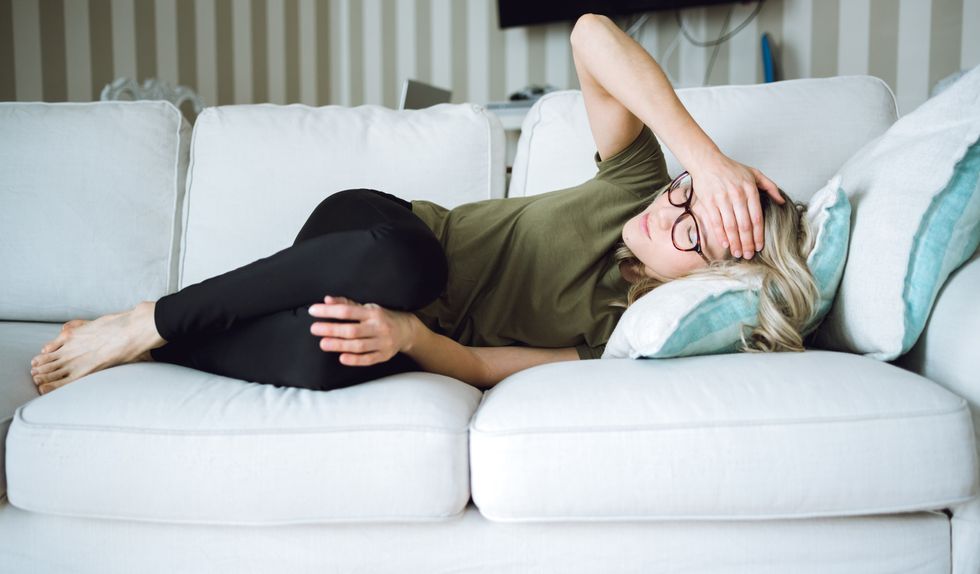
What’s a Typical Day Like When You Have a Disability?
Out of everything that was asked of me, i found answering this question to be the most important. “describe what you do in a typical day.” but our days aren’t typical, are they here was my reply. .
Katie Golden is a #teamHealthyWomen Contributor and this post is part of HealthyWomen's Real Women, Real Stories series.
Receiving mail from the Social Security Disability office is always a little frightening. Recently, an envelope showed up in my mailbox—it was time to recertify my disability .
It has been three years since I was awarded benefits. The Social Security Administration has the following guidelines on when and how often someone would be asked to recertify their condition:
If medical improvement is:
- “Expected,” your case will normally be reviewed within six to 18 months after your benefits start.
- “Possible,” your case will normally be reviewed no sooner than three years.
- “Not expected,” your case will normally be reviewed no sooner than seven years.
I fit into the “Possible” category. I rely on these benefits and can’t afford to miss anything in this process. I spend countless hours gathering up all the information I need so there would be no doubt that my chronic migraine disease was still stopping me from being able to have a “regular” job or lead a “regular” life.
On this particular form, out of everything that was asked of me, I found answering this question to be the most important: “Describe what you do in a typical day.”
But our days aren’t typical at all. Here was my reply.
Describe what you do in a typical day.
I do not have “typical days” anymore. I have low, medium, or high pain days. I have functioning, semi-functioning or debilitating days. With chronic migraine disease, I am never able to fully escape the pain as it is an everyday occurrence. My day depends on how intense the pain is and for how long.
I will illustrate how my days vary widely and without any warning. I make adjustments to my schedule throughout the day depending on the intensity of the symptoms, which I experience daily on varying levels. These symptoms include head pain, aphasia, allodynia, fatigue, phonophobia, photophobia, impaired cognitive dysfunction, nausea, akathisia and visual aura.
Low Pain/ Functioning Days
When I wake up at around 9 or 10 am with a pain level of 3-4, I know that this is the best I am going to feel all day. I am most productive for about an hour after waking up. I eat breakfast—usually yogurt and fruit. I take a handful of medication—both prescribed and over-the-counter—just to maintain a pain level that is tolerable.
I respond to emails and check the daily news. I may take some time to write, a practice that has become helpful to me in dealing with my illness. I also take this time to make doctor’s appointments and deal with insurance issues, which is a never-ending battle. Even on good days, if I do any housework I usually only focus on one area of my one-bedroom apartment, as this can be exhausting. During the day, my pain level spikes around 6-8, which forces me to take a nap for an hour or two mid-day. When I wake up, the pain has decreased slightly to about a 5.
I try to get in some form of exercise every day after napping. That may be taking a 30-minute walk, going to a yoga class or going on a bike ride. After one of these activities, I usually shower for the day. On a good day, I am able to run some errands, which I usually break up throughout the week in order to not increase my pain. The grocery store and laundry are two tasks that generally wear me out. While eating healthy is part of my life, making dinner can be challenging. I spend little time making dinner and my partner often helps in making meals and with clean-up.
I spend the evening watching TV, however, my pain increases and I become fidgety. With newly diagnosed Restless Leg Syndrome and Periodic Limb Movement Disorder, I find it very hard to sit still. Even with medications to manage the full-body, uncontrollable twitching and jerking movements, nighttime is very hard for me. The head pain generally spikes as well back up to a 7 or 8, making falling asleep difficult. I take another handful of medication to prevent worsening migraine attacks and to control the symptoms for the next day.
This is me on a low-pain / functioning day:
High Pain and Debilitating Days
I try to stick to a normal sleep schedule so that I wake up between 9 and 10 am. I eat breakfast depending on how nauseated I am. On these days, leaving the house, driving and exercise are out of the question. It is rare that my symptoms improve throughout the day—they typically get worse even when using rescue medication. Some of the medications I take to cut down the pain and inflammation on high pain/debilitating days cause side effects that make me drowsy. That, coupled with the excruciating pain, cause me to spend the majority of the day in bed. I spend little time on the internet or watching TV.
I use sleep as a coping mechanism. Even while sleeping, my body is tensed up to battle the pain. I curl into a ball to protect myself and often find fingernail marks in my palms because I’ve been clenching my fists while asleep. I also grind my teeth and need to wear a mouth guard.
During long stretches of time with high levels of pain, my sleep cycle is interrupted, my food intake is altered, showering is a chore and my body feels like it has been beaten up. I can be in this state for days, weeks or even months at a time. I rarely see friends or spend time outside when this happens. It can take weeks to build my strength back up.
I spend 80% of my time in my apartment. The 20% that I try to venture out has to be carefully planned out. Will there be any noise, lighting, food or other triggers that will make the migraine attacks worse?
I have to take medication before I leave and have all medications with me for any possible scenario when I leave the house. I need an exit strategy. Will I be able to lie down if the pain is suddenly unbearable? Do I have a way home if I feel I can’t drive? Will my impaired cognitive dysfunction cause me to become disoriented, forgetful, or lost?
I always carry a notebook with me because I can easily forget my tasks or what people tell me. I build in extra time because any task now takes me twice as long to complete. I have a small radius (about 5 miles) around my house where I am comfortable going by myself. Anywhere outside of my comfort zone, I prefer to have someone with me no matter what my pain level is that day.
These questions and considerations dictate my “typical day.”
A version of this post originally appeared at GoldenGraine.com .
Alopecia Areata: Losing Your Hair? Don’t Despair
What is alopecia it’s no laughing matter for millions of black american women, can you hear me and other people with disabilities, beyond the physical: how psoriatic arthritis can affect your mental and sexual health, más allá de lo físico: cómo la artritis psoriásica puede afectar tu salud mental y sexual, clinically speaking: questions to ask your hcp about psoriatic arthritis.
- Sharp Pain in Left Breast
- Signs of a Stroke
- Top 10 Sex Tips
- Covid Vaccine and Menstrual Cycle
- Pelvic Pain
- Sex and Vaginal Pain
- Perimenopause Weight Gain
- How to Last Longer in Bed
- International edition
- Australia edition
- Europe edition

What is life really like for disabled people? The Disability Diaries reveal all
We asked seven people to keep diaries for a month to document the reality of being disabled in Britain today. Frances Ryan reflects on the issues that arose – public transport, employment, housing, attitudes – and meets four of the diarists
Seven things you should stop saying and doing to disabled people
O n her way from St Albans to Nottingham, Shona Cobb nearly found herself stuck on a train on three separate occasions. Cobb had booked wheelchair ramp assistance for each required change – but not one staff member turned up to help her. Instead, at one stop, she had to rely on a friendly couple to help her; at another, the only way to prevent the train door closing with her still on board was to stick her foot in it.
It is a neat and infuriating irony that Cobb struggled to get to an interview about the discrimination facing disabled people because she was experiencing just this kind of “disabilism”.
The Guardian asked seven people to document their everyday experiences of disability throughout September – including Cobb, 19, who has the connective tissue disorder Marfan syndrome. Their diaries capture the reality of being disabled in Britain today: the slights, broken systems and misunderstandings that stop disabled people from living as should be their right.
Hassles with public transport are a common theme – such as the extra half-hour Nina Grant has to set aside to reach any destination, as she navigates the London tube network. “I’m lucky I live just one bus ride away from an accessible tube station,” writes Grant, 31, who has Ehlers-Danlos syndrome, another connective tissue disorder, and uses a power wheelchair.
Then there are the inquiries Sasha Saben Callaghan, who is visually impaired and has limited mobility, has to put up with from random strangers. When they ask: “How did that happen?”, she sometimes just makes something up. “Once I said: ‘I angered a magician.’ They weren’t expecting that.”

Pete Langman, 50, writes about the difficulties that come with negotiating the world when you have early onset Parkinson’s, which causes hand tremors and mobility problems – from bouncers at clubs asking if he’s drunk, to odd responses when internet dating. In a conversation with one potential date, who commented on the brevity of his texts, Langman explained: “I have Parkinson’s so phone texting is tough.” “U r joking right?” came the reply.
There’s the trickiness of negotiating the workplace. Luke Judge writes about a client who asks why he is clocking off at 4.30pm, the finishing time agreed by his doctor and employer. “He asked why I was leaving early. Cheeky! What could I say? I am epileptic and it’s a medical reason? A bit of an awkward conversation. I have had this with some colleagues, too, who jokingly call me a ‘part-timer’, which I laugh off. But most of them don’t know I’m epileptic, so I usually just say I have an appointment.”
The first day of a new job can be nerve-racking for anyone. “There’s always risk when moving jobs, but when you are disabled there’s another layer of risk: will I be subject to abuse or bullying because of my disability?” writes Sam Fowkes, who has cerebral palsy and has just been promoted as an NHS manager. “Will I be seen as inferior or troublesome because I’ll need adjustments? Will I even be considered fairly at the application stage if I disclose a disability?”
Over the course of the month, Craig Gilding’s insurance company calls him multiple times, “despite it being on their records that I am deaf. Luckily, I managed to answer and sort it. Another deaf friend has lost her no-claims bonus on her car insurance due to communication problems with insurers.” Gilding adds that he recently tried to change his address with the Department for Work and Pensions, but “they insisted I needed to call them (impossible) or post a letter” – which promptly got lost.
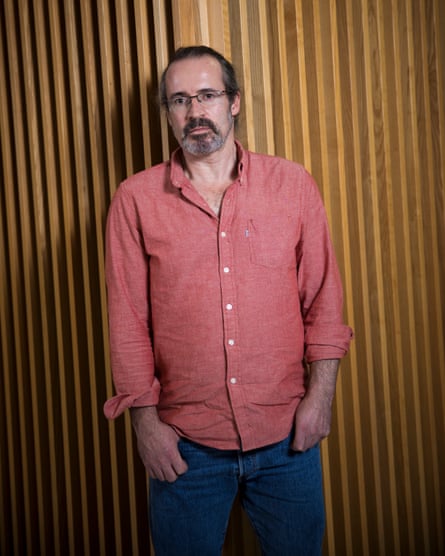
I meet with Cobb, Grant, Langman and Gilding at Nottingham Trent University to talk about their experiences of keeping the diaries. There are regular flashes of humour (while discussing the shocked stares of strangers who don’t expect wheelchair users ever to stand, Cobb and Grant exclaim sarcastically: “It’s a miracle!”) and shared frustrations: from similar battles with the social security system to discovering each had encountered prospective employers who, upon seeing their disability, turned them down for a job.
All four agree that the process of keeping a diary led to a spark of recognition: for the first time in their lives, they were consciously noting the inequality they regularly face. “Doing this made me realise how bad things are,” says Cobb. “It’s like everyday, normal: ‘I can’t get in there.’”
The picture the diaries paint reflect a well-documented landscape of prejudice and discrimination: this year, a major study by the Equality and Human Rights Commission found disabled people in the UK are “left behind in society”, with a lack of equal opportunities in education and employment, and barriers to access to transport, health services and housing. This came at the same time as a UN report that condemned the UK government for failing to uphold disabled people’s rights across a range of areas, including education and work.
One of the defining issues that runs through the disability diaries is access. Grant writes about shops she can’t get into because of large steps or raised doorframes, as well as battles with transport and even fellow passengers. When a mother with a buggy moved off the bus to leave room for Grant’s wheelchair (saying she was “the next stop anyway”), she found herself “facing an accusing set of faces who had just seen what looked like a young person with their own motorised vehicle force a mother and her child off the bus”. She adds: “It’s hard to describe the feeling of being scrutinised by multiple strangers at once.”
The diaries show how this carelessness (or outright hostility) from members of the public can combine with inaccessible infrastructure to make even simple tasks a headache: from luggage being piled up around a wheelchair on a train, to cramped shops with non-disabled shoppers not looking where they’re going. During one trip to the shops on a busy Saturday, Cobb writes that she got “hit in the shoulders by a lot of handbags”.
The difficulty of access can even mean missing out on a social life. “Every social invitation tends to require calling or emailing the venue to find out about accessibility,” Grant writes, “and then usually having to explain to the host why I can’t come.”
The last major government audit in 2014 (the largest ever of its kind) described access for disabled people on Britain’s high streets as “shocking”. Surveying more than 30,000 shops and restaurants, it found a fifth of shops have no wheelchair access, only 15% of restaurants and shops have hearing loops and three-quarters of restaurants don’t cater for people with visual impairments.

Commenting on a shopping trip in London, Cobb writes: “In River Island, I was shocked to find they don’t have a disabled changing room – I thought all places had to have them!” And when a new Topshop was built near her house recently, she found it had a flight of stairs but no lift. Cobb tells me she asked an assistant whether they would consider putting one in, but was told it would “inconvenience” other people. “It was: ‘We care more about our able-bodied customers than you.’”
It’s often the same with transport: bus drivers routinely refuse to let wheelchair users on board, despite their legal obligation to do so , while only about a quarter of London’s underground stations are accessible for wheelchairs. Grant routinely has to use a neighbouring tube station because her nearest one isn’t accessible – forcing her to take a 15-minute bus ride to the tube before “going back on herself”.
In one diary entry, Cobb chronicles a train journey from Leeds to Hull. It is the first time she has ever taken the train at night by herself: “My assistance didn’t turn up so everyone rushed on the train and filled the wheelchair spaces while I hunted down the guard for the train,” she writes. No one would move for her, so she ended up squeezing into a corner near the toilet for an hour: “It wasn’t exactly a safe way for me to travel, but I had no choice.”
For Fowkes, overcrowding on our rail networks presents him with a painful predicament on his daily commute in the West Midlands. Because his cerebral palsy is largely “invisible” (“unless you were looking, you wouldn’t know I was disabled”), he worries about asking commuters for a seat. “I’d have to try to explain my disability in front of a lot of people on the train, which would be massively uncomfortable – even forgetting the times I’ve been verbally and physically abused in the past,” he writes.
Fowkes’s disability can leave him with insomnia due to the pain. After one particularly bad night’s sleep, and another commute with no seat to work or back, he notes that by the end of the day “it feels like my left leg has been hit with a sledgehammer”. Wider adoption of badges like Transport for London’s Please Offer Me a Seat would help, he says.
Travelling around the country is little better for people with non-mobility-related disabilities. Gilding uses public transport frequently, but describes it as “a nightmare” for those like him with hearing problems. “If you have to speak to someone on train stations, say, you have these big help buttons – ring if you need assistance … I can’t hear a thing.”
Throughout his diary, Gilding, like Fowkes, notes how simple adaptations would make his commute accessible: “I’ve asked time and time again for departure boards, to no avail,” he writes.
The failure to address these problems speaks to a persistent, deeply embedded cultural attitude around disability: that disabled people aren’t quite like “normal people”. The belief that a wheelchair user doesn’t want a social life, say, makes it easier not to worry about ensuring transport networks are accessible. As Grant writes after yet another frustrating day, the most basic needs of disabled people are neglected “in a manner that wouldn’t happen if they were needed by everyone”.
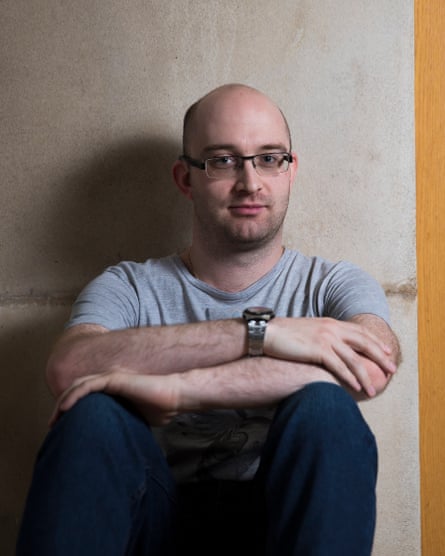
In the same way, disabled people still routinely encounter negative reactions from other members of the public – ranging from being patronised to outright hostility – simply for going out.
Langman, from Brighton, says he frequently faces derogatory comments about the way he walks because of his Parkinson’s, and writes of “the stares, the laughter after I pass” from strangers. Some even imitate his walk.
But as much as the abuse, it’s the benevolent prejudice – well-meaning but ultimately damaging – that affects him. Langman plays cricket for a local team and says opponents often don’t know how to respond to his condition, either overcompensating or suggesting a positive outlook would help. “Someone asked me what the prognosis of Parkinson’s was. I said: ‘It’s progressive.’ He said: ‘Well, it will be if that’s your attitude.’ I nearly punched him.”
Cobb, who posts videos online filmed from her wheelchair , points out that this intrusive outlook means disabled people often encounter a strange phenomenon on the street: members of the public routinely asking, “Why are you like that?”, as if they feel disabled people “owe” them an explanation about their medical background.
At best, this can lead to a bizarre crossing of boundaries, akin to asking a complete stranger about their sexual history (Gilding says he can be in the supermarket, and a fellow shopper will point to his cochlear implant and ask him: “What’s that on your head?”). At its worst, it can create the uneasy feeling that those around you are monitoring your disability and behaviour, waiting for you to slip up.
For the first year Cobb had her powerchair, she was afraid to move her legs in case people saw it as a sign she was “faking”. At a time when media depictions of disabled people are predominantly negative and reports of disability hate crime are increasing , Cobb says she repeatedly noticed strangers staring at her legs: “In the end, I wouldn’t even cross my legs.” This fear affected her to such a degree that, for years, she didn’t apply for disability benefits because she internalised the idea that she wasn’t “disabled enough” to “deserve it”.
Both Grant and Langman have lost their disability benefits in the past three years (Grant got hers back on appeal), while Cobb – who has a cyst at the bottom of her spine that means she needs a reclining wheelchair to relieve the pain – tells me she has been turned down twice by NHS wheelchair services. Like an increasing number of disabled people, she has had to start crowdfunding to raise the £11,500 she needs for her new chair. “I’m halfway there,” she says.

In the meantime, without a suitable wheelchair and with limited pain medication, Cobb is living with a “two-hour limit” for being out the house: after a couple of hours being interviewed, she has to go back to her hotel to lie down.
The UK’s lack of accessible housing is another key problem. Cobb lives with her parents in a two-storey house, and can only access her own bedroom by “going up and down the stairs on my bum”. Similarly, Grant is living in inaccessible housing with her family in London, and for the past year has been searching fruitlessly for an accessible property: “Private landlords don’t want you making adaptations [that I need to live independently], and the council doesn’t have accessible housing stock,” she says. “I have literally no idea where I’m going to go.”
As we talk, Grant reveals that she did not mention the house search in her diary, because she is so disheartened that even looking on the Rightmove website is making her anxious.
The introduction of equality legislation over the past 20 years (giving disabled people the right to access work, transport and public venues ), coupled with high-profile events such as London’s 2012 Paralympics, may have created the impression that Britain is moving forwards in its treatment of disabled people, but day-to-day life is still riddled with barriers.
Grant sums it up: “I think we like to think [as a country] we’re making progress. But in reality, we still get turned away from buses. We still have nowhere to live.”
Some of the solutions to this inequality require large-scale change, often involving government policy – from requiring a certain proportion of new-build houses to be wheelchair accessible, to stricter enforcement of equality legislation on pubs and shops that aren’t meeting their legal access requirements.
But what the diaries underline is that seemingly minor measures can be just as important: shop owners ensuring access buttons for automatic doors are actually working, for example; more dropped kerbs on pavements; shop staff ensuring non-disabled people aren’t using the accessible changing room.
As well as practical changes, a further cultural shift is required: both Grant and Gilding say having greater visibility of disabled people in the media and politics would go some way to normalising disability in society. All the diarists stress one thing above all else: that the able-bodied public needs to understand that disabled people still face inequality in Britain every day.
As Langman tweets to the rest of the diarists on his way home from the interview: “If one thing improves as a result of this, we’re winning.”
- If you have experiences relating to this article that you’d like to share, please email us at inequality.project@ theguardian.com
- Follow the Inequality Project on Twitter here
- The disability diaries
Comments (…)
Most viewed.
Disability and Health Stories from People Living with a Disability
- Nickole's Story
- Jerry's Story
- Justin's Story
- Suhana's Story
Real Stories from People living with a Disability
Nickole cheron’s story.
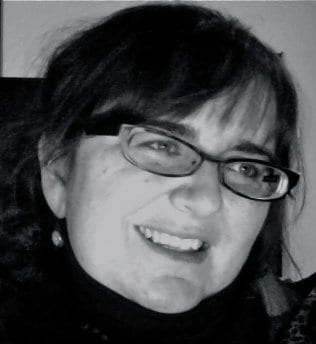
In 2008, a rare winter storm buried Portland, Oregon under more than a foot of snow. The city was gridlocked. Nickole Cheron was stuck in her home for eight days. Many people would consider that an inconvenience. For Nickole, whose muscles are too weak to support her body, those eight days were potentially life-threatening.
Born with spinal muscular atrophy, a genetic disease that progressively weakens the body’s muscles, Nickole is fully reliant on a wheelchair and full-time caregivers for most routine tasks. Being alone for eight days was not an option. So Nickole signed up for “ Ready Now! pdf icon [PDF – 4.8MB] external icon ,” an emergency preparedness training program developed through the Oregon Office of Disability and Health external icon .
“The most important thing I learned from ‘Ready Now!’ was to have a back-up plan in case of an emergency situation ,” she said. “When I heard the snow storm was coming, I emailed all my caregivers to find out who lived close by and would be available. I made sure I had a generator, batteries for my wheelchair, and at least a week’s supply of food, water and prescription medication.”
Nickole said the training was empowering, and reinforced her ability to live independently with a disability. She felt better informed about the potential risks people with disabilities could encounter during a disaster. For example, clinics might close, streets and sidewalks might be impassable, or caregivers might be unable to travel.
Among the tips Nickole learned from Oregon’s “Ready Now!” training are:
- Develop a back-up plan. Inform caregivers, friends, family, neighbors or others who might be able to help during an emergency.
- Stock up on food, water, and any necessary prescription medications, medical supplies or equipment. Have enough to last at least a week.
- Make a list of emergency contact information and keep it handy.
- Keep a charged car battery at home. It can power electric wheelchairs and other motorized medical equipment if there is an electricity outage.
- Learn about alternate transportation and routes.
- Understand the responsibilities and limitations of a “first responder” (for example, members of your local fire department of law enforcement office) during a disaster.
“This training shows people with disabilities that they can do more to triage their situation in a crisis than anyone else can,” she said. “‘Ready Now!’ encourages people with disabilities to take ownership of their own care.”
CDC would like to thank Nikole and the Oregon Office of Disability and Health external icon for sharing this personal story.
Learn about emergency preparedness for people with disabilities »
Jerry’s Story
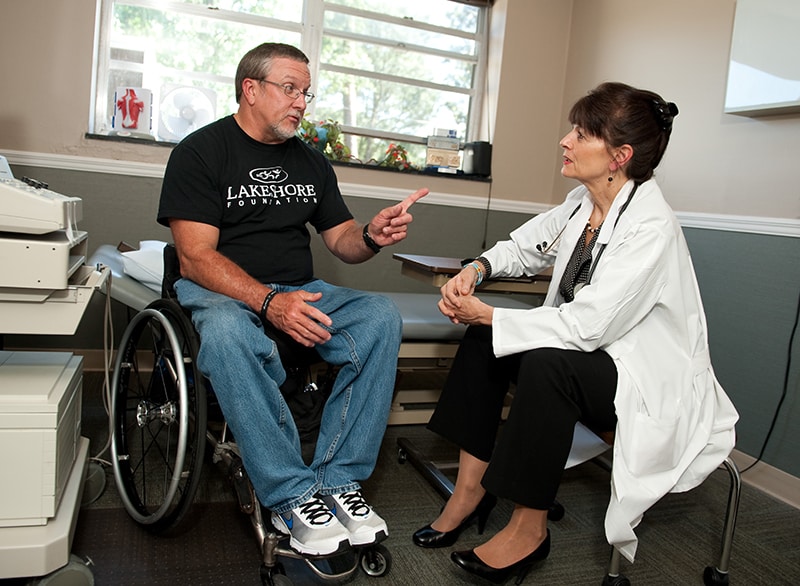
Jerry is a 53 year old father of four children. He’s independent, has a house, raised a family and his adult kids still look to him for support. Jerry recently retired as a computer programmer in 2009, and competes and coaches in several sports. This “healthy, everyday Joe, living a normal life” has even participated in the Boston Marathon. Jerry also has had a disability for over 35 y ears. In 1976 on December 3 (the same day that International Persons with Disabilities Day is recognized) Jerry was hit by a drunk driver. The accident left him as a partial paraplegic.
Jerry’s life is not defined by his disability. He lives life just like anyone else without a disability would live their life. “There’s lots I can do, and there are some things that I can’t do,” said Jerry. “I drive, I invest money. I’m not rich, but I’m not poor. I enjoy being healthy, and being independent.”
As a person with a disability, however, Jerry has experienced many barriers. Recovering from recent rotator cuff surgery, his rehabilitation specialists “couldn’t see past his disability”, administering tests and delivering additional rehabilitation visits that a person without a disability wouldn’t receive. He once was being prepared for surgery when a nurse proclaimed “he doesn’t need an epidural, he’s a paraplegic.” Jerry had to inform the nurse that he was only a partial paraplegic and that he would indeed need an epidural.
Jerry was in line at an Alabama court house to renew his parking permit and also renew his son’s registration. He watched a worker walk down the line and ask people “what do you need?” When she got to Jerry and saw his wheelchair, he was asked “who are you here with?” And Jerry finds it difficult to go to concerts and baseball games with a large family or friends gathering, because rarely are handicap-accessible tickets available for more than two people.
Jerry has seen a lot in over 35 years as someone living with a disability. He’s seen many of the barriers and attitudes towards people with disabilities persist. But he’s also seen many positive changes to get people with disabilities physically active through recreational opportunities such as golf, fishing and even snow-skiing. There are now organizations such as Lakeshore Foundation external icon – where Jerry works part-time coaching youth basketball and track – that provide recreational opportunities.
Jerry states: “I don’t expect the world to revolve around us. I will adapt – just make it so I can adapt.”
Justin’s Story
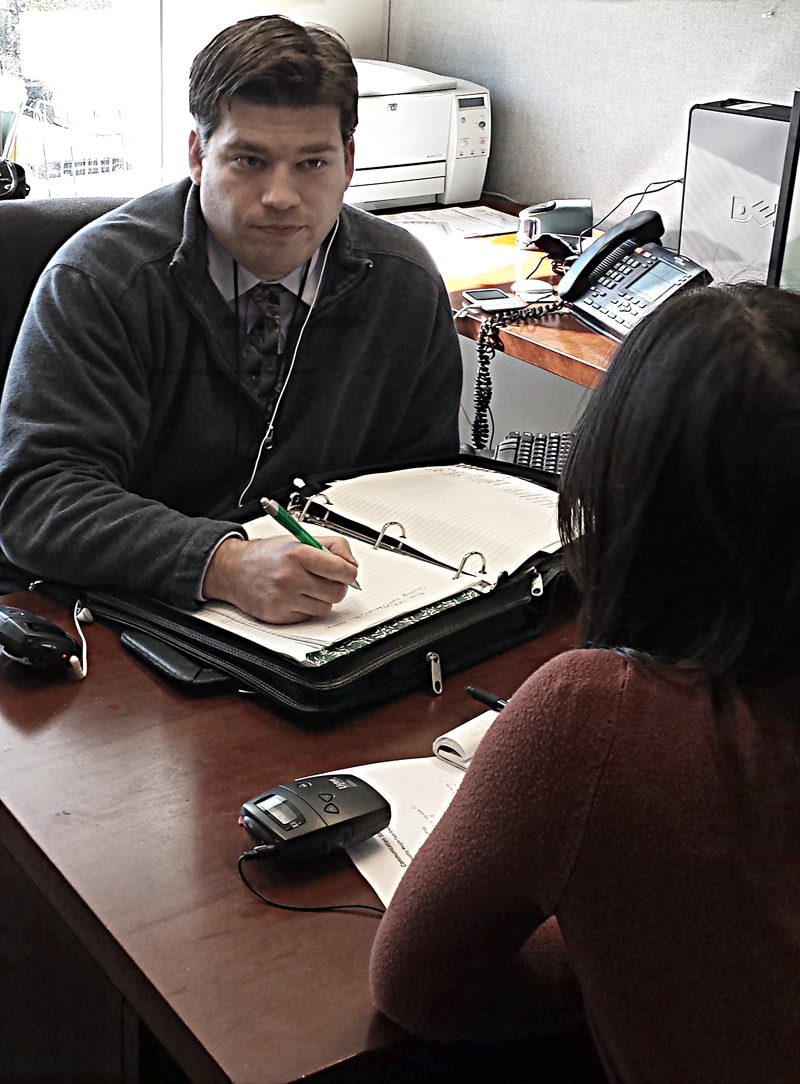
Justin was first diagnosed with a disability in the form of ADD (attention deficit disorder, now known as ADHD, or attention-deficit/hyperactivity disorder) at the age of 5 years. The diagnosis resulted in his removal from a regular classroom environment to special education courses. Justin’s parents were informed by Justin’s educators that he probably wouldn’t graduate high school, much less college.
Years later, as a young adult, Justin developed Meniere disease (an inner ear disorder), which affected his hearing and balance. The onset of the disorder left Justin with the scary reality that he could permanently lose his hearing at any time. Justin recalled a former supervisor taking advantage of this knowledge with an inappropriate prank: While speaking in a one-on-one meeting, the sound from the supervisor’s mouth abruptly halted, while his lips continued to move. Justin thought he had gone deaf – until the supervisor started laughing – which Justin could hear. Behaviors like the above took its toll on Justin’s confidence – yet, he knew he could contribute in society.
Spurred in part by adversity, Justin went back to school, earned a business degree, and shortly after, entered the commercial marketing industry. However, despite his education and experience, Justin was still regularly subject to the same stigma. Many of Justin’s work experiences over the course of his career left him feeling ashamed, guilty, offended, and sometimes, even intimidated. Rather than instilling confidence, it left him demoralized – simply because he was differently abled.
In July of 2013, everything changed for Justin. He joined the Centers for Disease Control and Prevention working as a contractor in the Division of Human Development and Disability at the National Center on Birth Defects and Developmental Disabilities. Justin’s colleagues put an emphasis on making him feel comfortable and respected as a member of a diverse and productive workforce. They welcomed Justin’s diversity, positively contributing to his overall health.
The mission of the Division of Human Development and Disability is to lead public health in preventing disease and promoting equity in health and development of children and adults with or at risk for disabilities. One in two adults with disabilities does not get enough aerobic physical activity 1 , and for Justin, regular physical activity is important to help him combat potentially lethal blood clots due to a genetic blood clotting disorder that he has. Every working hour, Justin walks for a few minutes, stretches, or uses his desk cycle. Justin also participates in walking meetings, which he believes leads to more creative and productive meetings.
Stories such as Justin’s are reminders that employment and health are connected. CDC is proud to support National Disability Employment Awareness Month every October. The awareness month aims to educate about disability employment issues and celebrate the many and varied contributions of America’s workers with disabilities.
Suhana’s Story
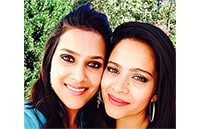
Suhana has a sister, Shahrine, who is older by 18 months. While Shahrine’s mother was pregnant with Suhana, their uncle came to town for a visit. During the visit, their uncle was quick to notice that Shahrine did not seem to be talking at an age appropriate level or respond when called upon. Shahrine would also turn up the volume on the television and radio when others could hear it without difficulty. Shahrine’s parents thought that her speech development and behavior were normal for a toddler, but thanks to the uncle expressing his concerns, the family soon took action. A hearing test found that Shahrine was hard of hearing.
Due to Shahrine’s diagnosis, Suhana received a hearing screening at birth and was found to be hard of hearing, as well. Had it not been for the concerns raised by the children’s uncle, not only would Shahrine’s hearing loss have possibly gone on longer without being detected, but Suhana would most likely not have had a hearing screening at birth.
As a result of their early diagnoses, Suhana and Shahrine’s parents were able to gain the knowledge they needed to make sure both of their children could reach their full potential in life. They had access to early services from a team of physicians, speech therapists, counselors, and teachers.
Suhana credits her parents for her own successes, saying that she couldn’t have made it as far as she has without their support and patience. Today, Suhana is employed at the Centers for Disease Control and Prevention (CDC) as an epidemiologist with the agency’s Early Hearing Detection and Intervention (EHDI) program. All children who are deaf or hard of hearing receive critical services they need as a result of the EHDI program, which funds the development of data systems and provides technical assistance to help improve screening, diagnosis and early intervention for these infants. When children who are deaf or hard of hearing receive services early, they are more likely to reach their full potential and live a healthy, productive adult life.
CDC is proud to support National Disability Employment Awareness Month every October. The goals of the awareness month are to educate the public about disability employment issues and celebrate the many and varied contributions of America’s workers with disabilities.
- Centers for Disease Control and Prevention. Vital Signs. [updated 2014 May 6; cited 2014 October 10] Available from: https://www.cdc.gov/vitalsigns/disabilities/
If you would like to share your personal story, please contact us at Contact CDC-INFO
- Policy Makers
- CDC Employees and Reasonable Accommodations (RA)

To receive email updates about this topic, enter your email address:
Exit Notification / Disclaimer Policy
- The Centers for Disease Control and Prevention (CDC) cannot attest to the accuracy of a non-federal website.
- Linking to a non-federal website does not constitute an endorsement by CDC or any of its employees of the sponsors or the information and products presented on the website.
- You will be subject to the destination website's privacy policy when you follow the link.
- CDC is not responsible for Section 508 compliance (accessibility) on other federal or private website.
- Skip to main content
- Keyboard shortcuts for audio player
Book Reviews
In 2 essay collections, writers with disabilities tell their own stories.
Ilana Masad

Buy Featured Book
Your purchase helps support NPR programming. How?
- Independent Bookstores
More than 1 in 5 people living in the U.S. has a disability, making it the largest minority group in the country.
Despite the civil rights law that makes it illegal to discriminate against a person based on disability status — Americans with Disabilities Act passed in 1990 — only 40 percent of disabled adults in what the Brookings Institute calls "prime working age," that is 25-54, are employed. That percentage is almost doubled for non-disabled adults of the same age. But even beyond the workforce — which tends to be the prime category according to which we define useful citizenship in the U.S. — the fact is that people with disabilities (or who are disabled — the language is, for some, interchangeable, while others have strong rhetorical and political preferences), experience a whole host of societal stigmas that range from pity to disbelief to mockery to infantilization to fetishization to forced sterilization and more.
But disabled people have always existed, and in two recent essay anthologies, writers with disabilities prove that it is the reactions, attitudes, and systems of our society which are harmful, far more than anything their own bodies throw at them.
About Us: Essays from the Disability Series of the New York Times, edited by Peter Catapano and Rosemarie Garland-Thomson, collects around 60 essays from the column, which began in 2016, and divides them into eight self-explanatory sections: Justice, Belonging, Working, Navigating, Coping, Love, Family, and Joy. The title, which comes from the 1990s disability rights activist slogan "Nothing about us without us," explains the book's purpose: to give those with disabilities the platform and space to write about their own experiences rather than be written about.
While uniformly brief, the essays vary widely in terms of tone and topic. Some pieces examine particular historical horrors in which disability was equated with inhumanity, like the "The Nazis' First Victims Were the Disabled" by Kenny Fries (the title says it all) or "Where All Bodies Are Exquisite" by Riva Lehrer, in which Lehrer, who was born with spina bifida in 1958, "just as surgeons found a way to close the spina bifida lesion," visits the Mutter Museum in Philadelphia. There, she writes:
"I am confronted with a large case full of specimen jars. Each jar contains a late-term fetus, and all of the fetuses have the same disability: Their spinal column failed to fuse all the way around their spinal cord, leaving holes (called lesions) in their spine. [...] I stand in front of these tiny humans and try not to pass out. I have never seen what I looked like on the day I was born."
Later, she adds, "I could easily have ended up as a teaching specimen in a jar. But luck gave me a surgeon."
Other essays express the joys to be found in experiences unfamiliar to non-disabled people, such as the pair of essays by Molly McCully Brown and Susannah Nevison in which the two writers and friends describe the comfort and intimacy between them because of shared — if different — experiences; Brown writes at the end of her piece:
"We're talking about our bodies, and then not about our bodies, about her dog, and my classes, and the zip line we'd like to string between us [... a]nd then we're talking about our bodies again, that sense of being both separate and not separate from the skin we're in. And it hits me all at once that none of this is in translation, none of this is explaining. "
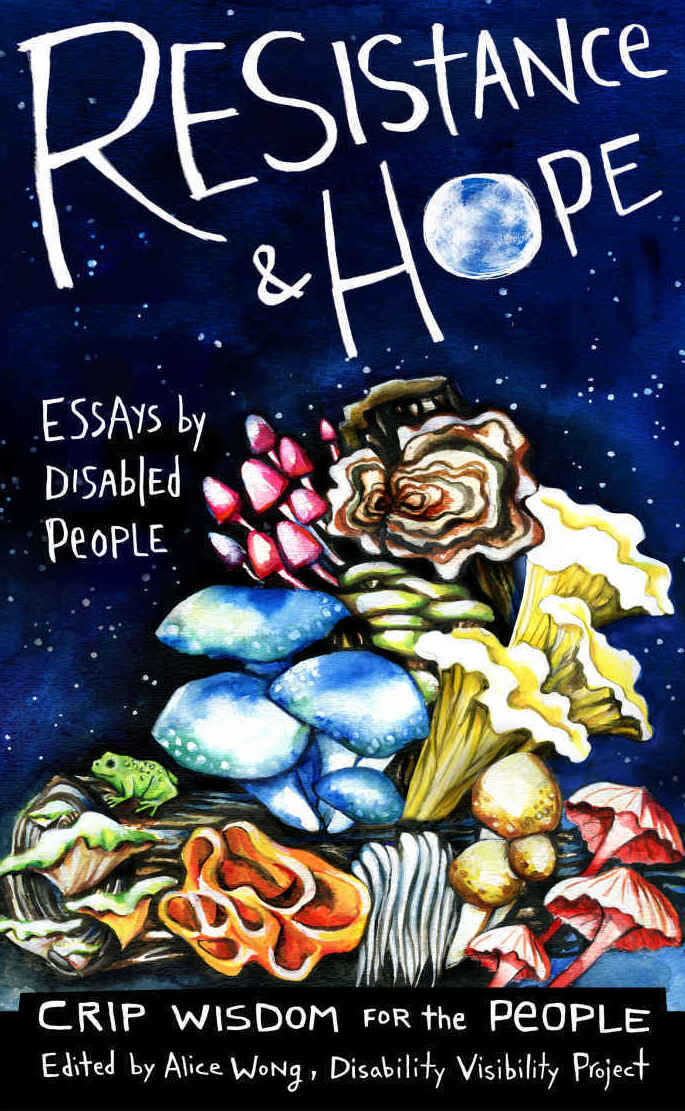
From the cover of Resistance and Hope: Essays by Disabled People, edited by Alice Wong Disability Visibility Project hide caption
From the cover of Resistance and Hope: Essays by Disabled People, edited by Alice Wong
While there's something of value in each of these essays, partially because they don't toe to a single party line but rather explore the nuances of various disabilities, there's an unfortunate dearth of writers with intellectual disabilities in this collection. I also noticed that certain sections focused more on people who've acquired a disability during their lifetime and thus went through a process of mourning, coming to terms with, or overcoming their new conditions. While it's true — and emphasized more than once — that many of us, as we age, will become disabled, the process of normalization must begin far earlier if we're to become a society that doesn't discriminate against or segregate people with disabilities.
One of the contributors to About Us, disability activist and writer Alice Wong, edited and published another anthology just last year, Resistance and Hope: Essays by Disabled People , through the Disability Visibility Project which publishes and supports disability media and is partnered with StoryCorps. The e-book, which is available in various accessible formats, features 17 physically and/or intellectually disabled writers considering the ways in which resistance and hope intersect. And they do — and must, many of these writers argue — intersect, for without a hope for a better future, there would be no point to such resistance. Attorney and disability justice activist Shain M. Neumeir writes:
"Those us who've chosen a life of advocacy and activism aren't hiding from the world in a bubble as the alt-right and many others accuse us of doing. Anything but. Instead, we've chosen to go back into the fires that forged us, again and again, to pull the rest of us out, and to eventually put the fires out altogether."
You don't go back into a burning building unless you hope to find someone inside that is still alive.
The anthology covers a range of topics: There are clear and necessary explainers — like disability justice advocate and organizer Lydia X. Z. Brown's "Rebel — Don't Be Palatable: Resisting Co-optation and Fighting for the World We Want" — about what disability justice means, how we work towards it, and where such movements must resist both the pressures of systemic attacks (such as the threatened cuts to coverage expanded by the Affordable Care Act) and internal gatekeeping and horizontal oppression (such as a community member being silenced due to an unpopular or uninformed opinion). There are essays that involve the work of teaching towards a better future, such as community lawyer Talila A. Lewis's "the birth of resistance: courageous dreams, powerful nobodies & revolutionary madness" which opens with a creative classroom writing prompt: "The year is 2050. There are no prisons. What does justice look like?" And there are, too, personal meditations on what resistance looks like for people who don't always have the mobility or ability to march in the streets or confront their lawmakers in person, as Ojibwe writer Mari Kurisato explains:
"My resistance comes from who I am as a Native and as an LGBTQIA woman. Instinctively, the first step is reaching out and making connections across social media and MMO [massively multiplayer online] games, the only places where my social anxiety lets me interact with people on any meaningful level."
The authors of these essays mostly have a clear activist bent, and are working, lauded, active people; they are gracious, vivid parts of society. Editor Alice Wong demonstrates her own commitments in the diversity of these writers' lived experiences: they are people of color and Native folk, they encompass the LGBTQIA+ spectrum, they come from different class backgrounds, and their disabilities range widely. They are also incredibly hopeful: Their commitment to disability justice comes despite many being multiply marginalized. Artist and poet Noemi Martinez, who is queer, chronically ill, and a first generation American, writes that "Not all communities are behind me and my varied identities, but I defend, fight, and work for the rights of the members of all my communities." It cannot be easy to fight for those who oppress parts of you, and yet this is part of Martinez's commitment.
While people with disabilities have long been subjected to serve as "inspirations" for the non-disabled, this anthology's purpose is not to succumb to this gaze, even though its authors' drive, creativity, and true commitment to justice and reform is apparent. Instead, these essays are meant to spur disabled and non-disabled people alike into action, to remind us that even if we can't see the end result, it is the fight for equality and better conditions for us all that is worth it. As activist and MFA student Aleksei Valentin writes:
"Inspiration doesn't come first. Even hope doesn't come first. Action comes first. As we act, as we speak, as we resist, we find our inspiration, our hope, that which helps us inspire others and keep moving forward, no matter the setbacks and no matter the defeats."
Ilana Masad is an Israeli American fiction writer, critic and founder/host of the podcast The Other Stories . Her debut novel, All My Mother's Lovers, is forthcoming from Dutton in 2020.
The Joy of a Disabled Life
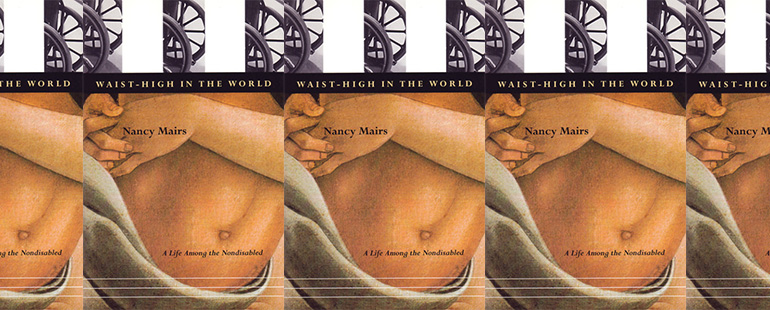
If, on the day of its publication, an author was told their book would still be relevant, perhaps even more so, in 30 years, they would likely be thrilled. I imagine Nancy Mairs, however, would let out a long, knowing sigh, one that says she’s not surprised, but she’s still disappointed.
Diagnosed with multiple sclerosis (MS) in the 1960s, by the time Mairs published her essay collection Waist-High in the World: A Life Among the Nondisabled in 1996, the white matter of her brain had been “shot to hell,” and she primarily used a mobility aid—a Quickie P100 electric wheelchair—to move through the world. Throughout the book, Mairs has a clear, singular intention: to demonstrate to “readers . . . who need, for a tangle of reasons, to be told that a life commonly held to be insufferable can be full and funny. I’m living the life. I can tell them.” Such a concept was, and unfortunately still very much is, a radical one.
I count myself among those readers who needed Mairs’s voice. When I was first diagnosed with Crohn’s disease, I collapsed under a heavy wave of dread—an overwhelming sense that my life would be more complicated and thereby less joyful because of my disability. I know, however, that I’m not the only reader whom Mairs foresaw approaching her work from this perspective. In fact, she appears to have written these essays specifically with readers like me in mind, with the goal of creating a travel guide of sorts for living with a disability, an altruistic attempt to “make the terrain seem less alien, less perilous, and far more amusing than the myths and legends about it would suggest.” A quarter-century later, we are, in some ways, in need of Mairs’s words now more than ever.
In the midst of a global pandemic, what disability advocates are calling , after Imani Barbarin , a “mass disabling event,” there are some who would seek to strip disabled Americans of the few legal protections we have. This past fall, CVS Pharmacy was prepared to go to the Supreme Court to argue that so long as discrimination against the disabled was “unintentional,” it was not in violation of any law. Only after public outcry did CVS dismiss the case and release a joint statement with disability groups, committing to “affordable and equitable access to health care.”
The premise of this case is disturbing. Whether CVS was aware of it or not, the fact of the matter is that most discrimination against the disabled isn’t “intentional.” It is most often the result of thoughtlessness or neglect; but this doesn’t make the discrimination (or, to use legalese, “disparate impact”) any less harmful. In fact, this sort of negligence functions as an effective erasure of the disabled. If accommodations aren’t provided, if our environments aren’t structured in a way that allows for the disabled to fully participate in society, then we are behaving as if disabled people don’t exist. And as Nancy Mairs baldly states, “whatever goes unseen goes unchanged.”
In Waist-High , Mairs dedicates some pages to specifically unpacking the connection between accessibility and erasure, addressing the issue head-on in the essay “Opening Doors, Unlocking Hearts.” Before plunging into the details, such as how private residences aren’t constructed with door frames wide enough for a wheelchair or showers with grab bars, or how public spaces typically only meet these types of requirements under the threat of litigation, Mairs opens the essay with the sharpest of deductions: “The world as it is currently constructed does not especially want—and plainly does not need—me in it . . . I mean simply that much of the time, as a disabled woman, I find that my physical and social environments send the message that my presence is not unequivocally either welcome or vital.” She then goes further, reaching beyond the fact that we live in a world that’s hostile toward disabled people into the heart of the matter: Why is our world built this way in the first place? The answer: Disability is the nondisableds’ worst nightmare, and they assume it must be ours, too.
Nondisabled people’s fear of disability most often takes the form of pity, which manifests in one of two ways: avoidance or feigned adoration. Mairs addresses both of these reactions over and over again throughout the collection. While it’s rather obvious that those who practice, in Mairs’s words, “studied inattention” when interacting with a disabled person are made uncomfortable by the presence of disability, some may ask how the expression of (again, in Mairs’s words) “unmerited admiration” is a display of pity. Mairs breaks this concept down better than I could ever hope to:
‘You’re so brave,’ they gush, generally when I have done nothing more awesome than roll up to the dairy case and select a carton of vanilla yogurt. ‘I could never do what you do!’ Of course they could—and likely would—do exactly what I do, maybe do it better, but the very thought of ever being like me so horrifies them that they can’t permit themselves to put themselves on my wheels even for an instant. Admiration, masking a queasy pity and fear, serves as a distancing mechanism, in other words.
From this deep, Mairs plunges deeper still. How does this fear, whether it’s manifested through avoidance or fawning, work to keep our world inequitable? According to Mairs, “the people who seem most hostile to my presence are those most fearful of my fate. And since their fear keeps them emotionally distant from me, they are the ones least likely to learn that my life isn’t half so dismal as they assume.”
On some level, nondisabled people recognize that they are one car accident or diagnosis away from being just like us–and that terrifies them. They believe that we must be in so much pain and suffering at all times, that it must be so thoroughly awful to inhabit our bodies, that our lives are not worth living. What most nondisabled people have yet to untangle, however, is that the source of much, if not most, of the pain and discomfort disabled people face is the hostile structures of our society: the public health policies, the physically inaccessible spaces, the ableism—not our disabilities themselves. If these issues were remedied, if disabled people were not only welcomed but cherished by our society, for something other than their capacity to “inspire,” there would be no reason to fear becoming disabled.
As Mairs wades through these issues throughout her book, she deploys a sense of humor that keeps the reader laughing, even as they confront such serious topics as eugenics and medical fraud. Some might assume that Mairs employs a dark humor, trying to make us laugh so we don’t cry. In one passage, for example, she writes, “The other day, when my husband opened a closet door, I glimpsed myself in the mirror recently installed there. ‘Eek,’ I squealed, ‘a cripple!’ I was laughing, but as is usually the case, my humor betrayed a deeper, darker reaction.” Immediately afterward, Mairs presents an analysis of how our culture portrays “illness and deformity” as “the consequence of cosmic bad luck” and “deviations from the fully human condition, brought on by personal failing or divine judgment,” resulting in Mairs being “appalled by [her] own appearance.” I’d argue, however, that this excerpt is an exception rather than the rule and, on the whole, Mairs’s commentary and asides are simply intended as humor. In one essay, Mairs discusses traveling while disabled: “Now that I can no longer dress myself,” she writes, “traveling alone to any destination other than a nudist colony is impractical.” In another, Mairs shuns the term “mobility impaired” with a quip: “Certainly I am not mobility impaired; in fact, in my Quickie P100 with two twelve-volt batteries, I can shop till you drop at any mall you designate. I promise.” Perhaps my favorite comedic aside of the whole collection is when Mairs discusses how her sex life has evolved, considering both her MS and her husband’s impotence. She writes, “And since my wheelchair places me at the height of [my husband’s] penis (though Cock-High in the World struck me as too indecorous a book title) I may nuzzle it in return.” Let me tell you: I cackled.
You’ll notice that many of Mairs’s humorous comments point the reader back to her disability, but she is neither making us “laugh so we don’t cry,” nor is she being self-deprecating in an attempt to beat others to the punch. Instead, Mairs calls our attention, over and over again, to the innate humor to be found in disability, which, just like any other aspect of life, has its inherent moments of levity. Through this use of humor, Mairs challenges her nondisabled readers to push past any discomfort or pity they might have once felt and instead acknowledge the fact that a disabled life is very much worth living; it is full of laughter and joy, and not even in spite of one’s disability—often because of it.
Although we won’t know the full extent of long-COVID’s impact for some time, we can almost guarantee that thousands, if not millions, of individuals will newly identify as disabled in the coming years. And although Mairs is writing in 1996, when COVID-19 was only sci-fi fodder, she points out that through advances in medicine and technology, people are living longer, which statistically increases one’s chance of developing an illness or being involved in an accident that will “permanently alter physical capacities.” With an eerily prophetic tone, Mairs concludes that “something without precedent is taking place, and we need a theoretical and imaginative framework for evaluating and managing the repercussions.”
If we don’t restructure our environments and our understanding of disability, accessibility, and equity, we risk making the world worse for ourselves and the people we love, no matter our disability status. It’s past time we all do the work to root out the ableism we’ve internalized. Even though—or because—we have MS or Crohn’s or asthma or astigmatism, as Mairs says, “our lives are too precious and delightful to us as they are.”
Related Posts
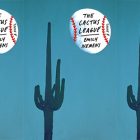
About Author
My Joy Is My Freedom
On the revolutionary act of choosing happiness as a Black, disabled woman.
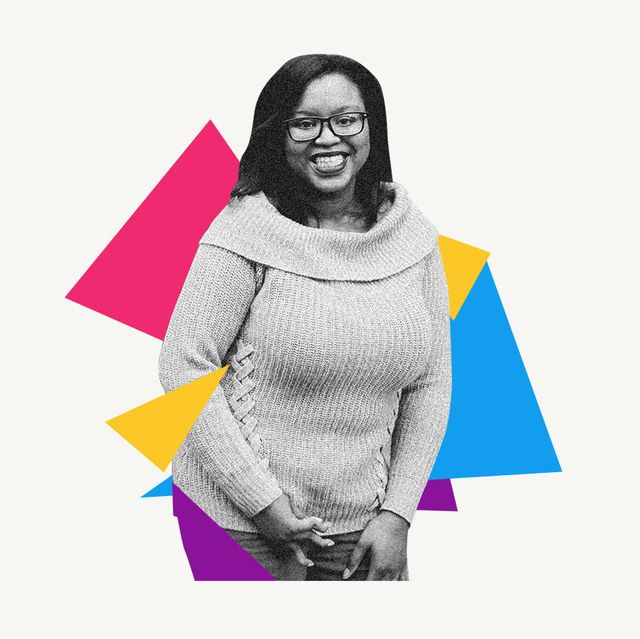
Embracing my own joy now means that I didn’t always. Hope is my favorite word, but I didn’t always have it. Unfortunately, we live in a society that assumes joy is impossible for disabled people, associating disability only with sadness and shame. So my joy—the joy of professional and personal wins, of pop culture and books, of expressing platonic love out loud—is revolutionary in a body like mine. I say this without hyperbole, though fully aware that the thought may confuse, frighten, or anger people. As a Black woman with cerebral palsy, I know what it is like to encounter all three.
The face of the disability community is very white. People don’t often think of people of color or of LGBTQ+ people when they think of us. Instead, they think of cis white male wheelchair users who hate themselves, because that is so often the way pop culture depicts us. I’m not a cis heterosexual white male wheelchair user, so in pop culture, I don’t exist. That’s not okay because it’s not reality. I exist, I am a real person behind these words, and I deserve to be seen.
.css-1aear8u:before{margin:0 auto 0.9375rem;width:34px;height:25px;content:'';display:block;background-repeat:no-repeat;}.loaded .css-1aear8u:before{background-image:url(/_assets/design-tokens/elle/static/images/quote.fddce92.svg);} .css-1bvxk2j{font-family:SaolDisplay,SaolDisplay-fallback,SaolDisplay-roboto,SaolDisplay-local,Georgia,Times,serif;font-size:1.625rem;font-weight:normal;line-height:1.2;margin:0rem;margin-bottom:0.3125rem;}@media(max-width: 48rem){.css-1bvxk2j{font-size:2.125rem;line-height:1.1;}}@media(min-width: 40.625rem){.css-1bvxk2j{font-size:2.125rem;line-height:1.2;}}@media(min-width: 64rem){.css-1bvxk2j{font-size:2.25rem;line-height:1.1;}}@media(min-width: 73.75rem){.css-1bvxk2j{font-size:2.375rem;line-height:1.2;}}.css-1bvxk2j b,.css-1bvxk2j strong{font-family:inherit;font-weight:bold;}.css-1bvxk2j em,.css-1bvxk2j i{font-style:italic;font-family:inherit;}.css-1bvxk2j i,.css-1bvxk2j em{font-style:italic;} "I live as unapologetically as I can each day—for myself, of course, but also for those…who will walk through the doors I hope to break down."
When I created #DisabledAndCute in 2017, I did so to capture a moment, a moment of trust in myself to keep choosing joy every single day. The hashtag was for me, first, and for my Black disabled joy. I wanted to celebrate how I finally felt that, in this Black and disabled body, I, too, deserved joy. The hashtag went viral and then global by the end of week two. When disabled people took to it to share their stories and journeys, I was floored and honored. There were naysayers who hated that I used the word cute and accused me of making inspiration porn, but the good responses outweighed the bad. So I live as unapologetically as I can each day—for myself, of course, but also for those who will come up after me, who will walk through the doors I hope to break down.
Living unapologetically looks like retweeting praise for my work or my book on Twitter. Calling out ableism, racism, and homophobia in marginalized communities through my writing. It means that I’ve literally stopped apologizing for the space I take up on stages or in airports—especially in airports, since I use their wheelchairs to get from gate to gate to avoid body pain—or anywhere else I exist. I’ve stopped saying sorry to the people around me as the airport attendant pushes me to my gate. I feel liberated.
I may not find joy every day. Some days will just be hard, and I will simply exist, and that’s okay, too. No one should have to be happy all the time—no one can be, with the ways in which life throws curveballs at us. On those days, it’s important not to mourn the lack of joy but to remember how it feels, to remember that to feel at all is one of the greatest gifts we have in life. When that doesn’t work, we can remind ourselves that the absence of joy isn’t permanent; it’s just the way life works sometimes. The reality of disability and joy means accepting that not every day is good but every day has openings for small pockets of joy. On the days I can’t get out of bed because my body pain is too great (a reality of my cerebral palsy), I write in the notes app on my phone or spend the day reading books or watching romantic comedies on the Hallmark Channel. These days and others that I carve out for self-care are necessary for my well-being.
Disability Visibility: First-Person Stories from the Twenty-First Century

For most of my life, hope, like joy, seemed to elude me—it felt impossible in a body like mine. I was once a very self-deprecating and angry person who scoffed at the idea of happiness and believed that I would die before I ever saw a day where I felt excited at the prospect of being alive. I realized I was wrong on a snowy day in 2016 just after Christmas, when I vowed to try to hold on to and nurture the feeling of joy, even if skeptically. I championed the act of effort and patience with myself by forcing myself to reroute negative thoughts with positive ones. Instead of saying what I hated about myself, I spoke aloud what I liked about myself.
In doing this, hope and joy became precious, sacred, a singular and collective journey. I shared my journey with the people who loved me before I ever thought I could. I shared my journey with the world because I wanted them all to know that who I am becoming is only possible because of who I was, and that is what makes it so beautiful. My joy is my freedom—it allows me to live my life as I see fit. I won’t leave this earth without the world knowing that I chose to live a life that made me happy, made me think, made me whole. I won’t leave this earth without the world knowing that I chose to live.
From Disability Visibility: First-Person Stories from the Twenty-First Century edited by Alice Wong, to be published on June 30, 2020 by Vintage Books, an imprint of the Knopf Doubleday Publishing Group, a division of Penguin Random House LLC. Compilation copyright (c) 2019 by Alice Wong.

What to Read in 2024
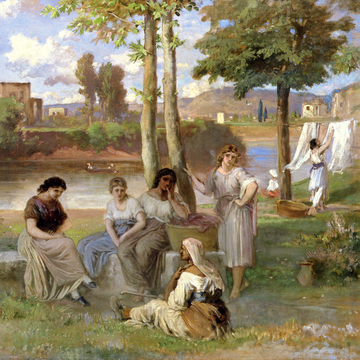
Shelf Life: Anne Lamott

How Yulin Kuang Found Her Own ‘Love Story’
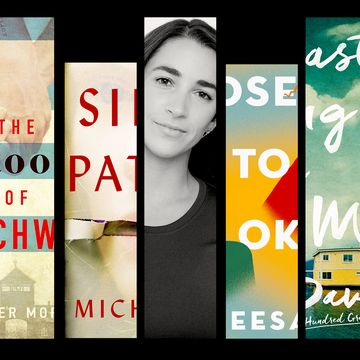
Shelf Life: Aly Raisman
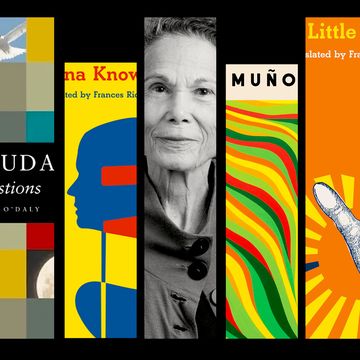
Shelf Life: Julia Alvarez
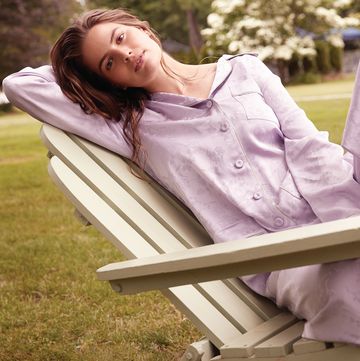
Cameron Russell Is Unafraid
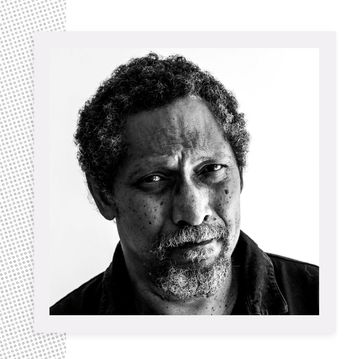
Percival Everett on 'James'
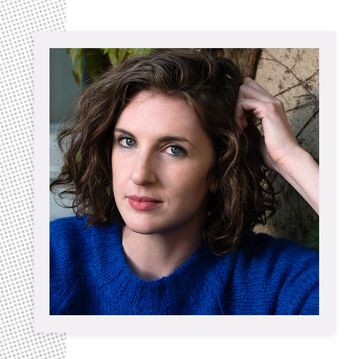
Lauren Oyler on 'No Judgment' and Criticism
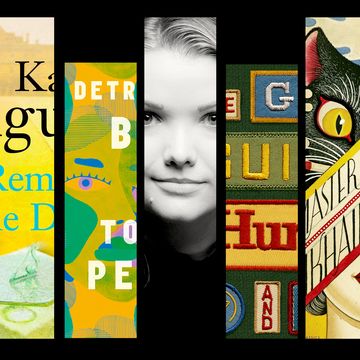
Shelf Life: Téa Obreht
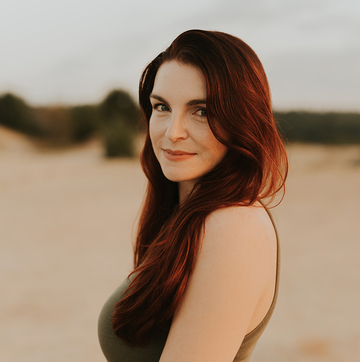
Carissa Broadbent On the Next 'Crowns of Nyaxia'

The Best Mystery and Thriller Books of 2024

Shelf Life: Cathleen Schine

My Problem With College Admissions Essays as a Disabled Person
As a 20-year-old transfer student who spent a summer studying abroad, dragging out the old same elegized story of my life as a young person “robbed of a normal carefree youth” is a bit boring. I’m tired of hearing my story, too. The story isn’t untrue or unworthy of being heard; it’s just so often associated with the disabled community that it becomes the only story expected of me. The disabled community is the largest marginalized minority in the world. There are many narratives worthy of being told, but so often they are overlooked for the inspiration porn , instantly shareable Facebook headlines.
Don’t get me wrong, I love a good overcoming adversity story. These stories are valid and so important. The essays I write for those college admissions boards, outside of how my disability affects my life, are not necessarily a Penguin Classics level work ready to be sent off to the closest corporate bookstore. The essay I try to write focuses more on my personal journey of self-discovery that genuinely starts out with “I’m a cliche” and goes on to wax poetic about the magic of soul searching. But when does the disabled community get to stop “overcoming adversity” and allow members to be known as individuals? My multiple sclerosis is an important part of my life, but as I’m sure many disabled kids who have applied to college can attest: it’s also the hardest to make sound not boring.
Personally, before I was diagnosed my life was a whole lot of sleeping all day, then vomiting if I ate anything. Really fun to relive as you beg a school for scholarship money, right? This is why I wholeheartedly believe college application essays are inherently ableist. I understand my privilege in this world as someone who was diagnosed later in her youth and was fortunate enough to have opportunities — like study abroad, or even being able to afford my medical care.
This is not what colleges want to hear about, though. Sure, maybe under the veil of how my disability affects such experiences and how I overcame it. (Spoiler: Sometimes I don’t; life for disabled people isn’t endless amounts of awe-inspiring obstacle climbing.) The personhood of any disabled person cannot be boiled down to one label. A disabled life is more than just one bad thing after another, so let me revel in the good once in a while.
Now, excuse me as I finish my Common App essay with this last line of lamenting my disabled experience. Hey, I still need that scholarship money.
We want to hear your story. Become a Mighty contributor here .
Image by contributor.
My journey to self-acceptance as disabled was full of realizations about what labels are and who gets to define them. I am disabled with a lot to say and not talented enough to join a punk band.
Disability Visibility
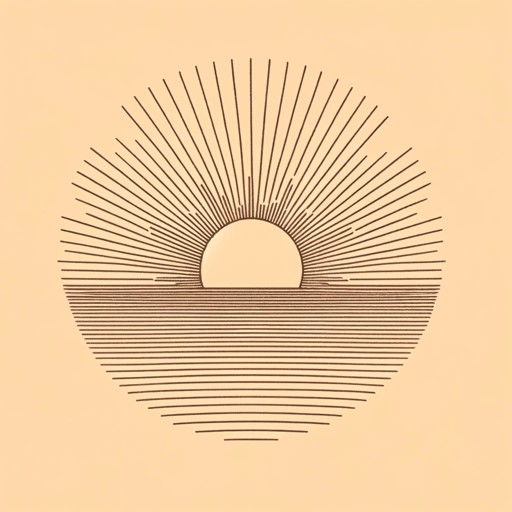
75 pages • 2 hours read
Disability Visibility: First-Person Stories from the Twenty-first Century
A modern alternative to SparkNotes and CliffsNotes, SuperSummary offers high-quality Study Guides with detailed chapter summaries and analysis of major themes, characters, and more.
Chapter Summaries & Analyses
Part I: Being
Part II: Becoming
Part III: Doing
Part IV: Connecting
Key Figures
Index of Terms
Important Quotes
Essay Topics
Summary and Study Guide
Disability Visibility: First-Person Stories from the Twenty-First Century (2020) is an anthology of 37 nonfiction essays collected by disability rights activist Alice Wong. Each essay concerns a different aspect of what it means to be disabled, and the volume includes writings from people with physical, intellectual, psychiatric, and sensory disabilities. These essays center a broad array of topics, including medical trauma, personal relationships, career success, family dysfunction, art, activism, history, and politics.
Disability Visibility ’s model of disability studies and activism is thoroughly intersectional. Most of the contributing authors are queer, women, and/or people of color. Many of them draw specific attention to how these identities intersect with their disabilities and disabled status. Many are also multiply disabled, which they explore in varying degrees of detail.
Get access to this full Study Guide and much more!
- 7,400+ In-Depth Study Guides
- 4,900+ Quick-Read Plot Summaries
- Downloadable PDFs
This text is one part of a broader effort called the Disability Visibility Project (DVP). Spearheaded by Wong, DVP is an ongoing multimedia project and digital community dedicated to collecting, preserving, and sharing disability media and culture. This banner includes several other books, a digital archive, a podcast, and a blog. Like DVP, Disability Visibility aims to capture and share a broad range of disabled experiences and perspectives. To make the text widely accessible, it is available in a variety of formats including an audiobook, a braille edition, a plain language summary, and an adaptation for young readers.
This guide references the eBook edition from Vintage Books, published in 2020.
The SuperSummary difference
- 8x more resources than SparkNotes and CliffsNotes combined
- Study Guides you won ' t find anywhere else
- 100+ new titles every month
CONTENT WARNING: This text (and this guide) contains extended discussions and depictions of ableism , medical abuse/malpractice, sexual assault, racism, sexism, classism, antisemitism, islamophobia, anti-queerness, eugenics, Nazism, physical injury, serious illness, and compulsory institutionalization. This book also contains frank discussions and depictions of human bodies, bodily fluids/waste (e.g.: blood, vomit, excrement, urine), sex and sexuality, and physical pain.
In her Introduction , editor Alice Wong introduces her work and the ethos behind this book: “I want to center the wisdom of disabled people […] Collectively, through our stories, our connections, and our actions, disabled people will continue to confront and transform the status quo” (xxii). The anthology comprises 37 nonfiction essays written by people with disabilities.
Harriet McBryde Johnson’s “Unspeakable Conversations” recalls her formal debate with Dr. Peter Singer at Princeton. On a personal level, Johnson finds Singer respectful and pleasant, but she regards his beliefs as genocidal towards disabled people.
“For Ki’tay D. Davidson, Who Loved Us” is a eulogy for disability rights advocate Ki’tay Davidson written by his surviving partner, Talila Lewis. Lewis celebrates Davidson’s identity as a Black, disabled, transgender man.
“If You Can’t Fast, Give” is a reflection by Maysoon Zayid, a Muslim performer with cerebral palsy. She writes about her experiences fasting during Ramadan .
In “There’s a Mathematical Equation that Proves I’m Ugly,” Ariel Henley describes the difficulties of growing up with facial deformities. The essay is built around a seventh-grade art lesson in which she recalls being taught “the golden ratio,” a mathematical formula created to objectively measure facial attractiveness.
“The Erasure of Indigenous People in Chronic Illness” recalls Jen Deerinwater’s experiences with anti-Indigenous racism in medical settings.
June Eric-Udorie’s “When You Are Waiting to Be Healed” charts her journey of self-acceptance. She grew up in a deeply religious family; her family members only acknowledged her disability when praying for God to “heal” it. As a young adult, Eric-Udorie finds a greater level of independence and self-esteem by acknowledging and accepting her disability.
“The Isolation of Being a Deaf Person in Prison” describes Jeremy Woody’s traumatic experiences as a deaf prisoner.
“Common Cyborg” concerns author Jillian Weise’s exploration of cyborg identity. She uses a prosthetic leg and defines cyborgs as disabled people who have technology incorporated into their bodies. She also refutes transhumanism from a disabled perspective .
“I’m Tired of Chasing a Cure” follows Liz Moore as they navigate life with chronic pain and bipolar disorder. Though they identify many things “wrong” with their body, they are tired of seeking relief through medicine and spiritual healing.
“We Can’t Go Back” by Ricardo T. Thornton Sr. is an excerpt from his statement before the US Senate. In it, he recounts his life’s story and argues that the intellectually disabled are fully capable of participating in society.
“Radical Visibility” discusses Sky Cubacub’s clothing brand, Rebirth Garments. Rebirth’s stated mission is to create fashionable and functional clothing for disabled and gender-nonconforming people.
Haben Girma’s “Guide Dogs Don’t Lead People. We Wander as One” centers on the dynamic she shares with her seeing-eye dog Mylo and describes the sensory experience of navigating together.
“Taking Charge of My Story as a Cancer Patient at the Hospital Where I Work” follows Diana Cejas through her residency at a hospital, centering on the fallout from her stroke and cancer diagnosis. She notices a unique social element to working at the hospital where she received treatment and struggles to adjust. As she recovers and progresses in her career, Cejas starts talking about her experiences on her own terms and hears other people’s stories in return.
Sandy Ho’s “Canfei to Canji” contends with her intersecting identities which are often in tension with each other. She is a disabled Asian American and the child of immigrants. Her parents immigrated to the United States in the 1980s, just prior to the rise of disability acceptance in China. As a result, they struggled to parent Sandy while contending with the assumption that disabled people are canfei— “a useless burden.”
“Nurturing Black Disabled Joy” is a reflection on hard-won hope by Keah Brown. Though she was initially a pessimistic, angry, and skeptical person, Brown now embraces the pursuit of joy and “living unapologetically.”
“Last but Not Least” describes Keshia Scott’s exploration of her sexuality. As a blind person, she initially took umbrage at the thought that she might be asexual because she’d been exposed to the ableist myth that all disabled people are either sexless or hypersexual. At the time of writing, she gladly embraces asexuality .
In “Imposter Syndrome and Parenting with a Disability,” Jessica Slice describes the way her disability limits her movement and how that impacts the way she raises her son.
“How to Make a Paper Crane from Rage” uses origami folding as a metaphor for suppressing one’s rage. Elsa Sjunneson writes about losing her father to AIDS, enduring sexual assault, and experiencing ableism.
“Selma Blair Became a Disabled Icon Overnight. Here’s Why We Need More Stories Like Hers” praises actress Selma Blair for her poise and confidence in the public eye after announcing her multiple sclerosis (MS) diagnosis. As a disabled person herself, author Zipporah Arielle is moved by seeing her experiences reflected in mainstream media.
“Why My Novel Is Dedicated to My Disabled Friend Maddy” by A. H. Reaume is an acknowledgment and celebration of disabled collaboration. Reaume and her friend, Maddy Sloan, have each sustained brain injuries that impact their abilities to function on a day-to-day basis. Reaume writes that she physically could not have finished her novel without Sloan’s help.
Rebecca Cokley’s “The Antiabortion Bill You Aren’t Hearing About” is a 2019 response to Texas Senate Bill 1033, which would ban abortion in the case of “severe fetal abnormality.” Though the bill is framed as a defense of disabled lives, Cokley identifies it as an assault on bodily autonomy.
“So. Not. Broken.” is Alice Sheppard’s exploration of what it means to be a dancer who uses a wheelchair.
“How a Blind Astronomer Found a Way to Hear the Stars” is a transcription of Wanda Díaz-Merced’s TED Talk on how her blindness led her to innovate as an astronomer.
“Incontinence Is a Public Health Issue— and We Need to Talk About It” addresses the shame and stigma attached to incontinence. Author Mari Ramsawakh demonstrates why this creates health risks for the people who suffer from it and presents her own experiences with incontinence as a case study.
In “Falling/Burning,” Shoshana Kessock uses comedian Hannah Gatsby’s special Nanette to explain her experience of being an artist with Bipolar II. Kessock refutes the idea that artists must suffer to achieve greatness by sharing her history with medication and productivity.
In “Six Ways of Looking at Crip Time,” Ellen Samuels explores the concept of “crip time,” defined by author Margaret Price as a “flexible approach to normative time frames” (175). Samuels explains the solitude and confusion she feels by creating six different iterations of crip time .
“Lost Cause” follows Reyma McCoy McDeid from early childhood to the time of writing. The essay is structured around moments in which she was told that she or something she was pursuing was a “lost cause.” She also explores the intersection of ableism, sexism, and racism and how it affects her.
“On NYC’s Paratransit, Fighting for Safety, Respect, and Human Dignity” recounts Britney Wilson’s experiences with Access-A-Ride, New York City’s paratransit service. Wilson’s testimony depicts Access-A-Ride as an extremely flawed service that overworks its drivers, wounds its disabled user base’s dignity, wastes their time, and even puts them in danger.
“Gaining Power Through Communication Access” is an excerpt from an interview with Lateef McLeod. The interview was conducted by Alice Wong on the Disability Visibility podcast. McLeod uses augmentative and alternative communication (AAC) as disability aids. He describes his history with AAC and other assistive technologies.
“The Fearless Benjamin Lay” simultaneously celebrates the life of the titular 18th-century abolitionist and little person. Author Eugene Grant, a self-identified dwarf person himself, also challenges Lay’s modern-day obscurity.
“To Survive Climate Catastrophe, Look to Queer and Disabled Folks” urges the reader to use multiply oppressed communities’ knowledge of survival to avert climate disaster.
“Disability Solidarity” is a document undersigned by the members of the Harriet Tubman Collective. It argues that social justice movements and discussions around police violence against Black people are incomplete without active anti-ableist praxis.
“Time’s Up for Me, Too” contains author Karolyn Gehrig’s appraisal of the “Time’s Up” and “Me, Too” movements, especially in Hollywood. As a disabled survivor of sexual assault, Gehrig feels that she and her disabled aunt, Virginia, are excluded from these movements.
“Still Dreaming Wild Disability Justice Dreams at the End of the World” consists of both poetry and prose . It concerns what it means to be disabled in times of widespread crisis and explores what disabled people can provide to social justice movements, including climate justice and protests against ICE concentration camps.
Jamison Hill’s “Love Means Never Having to Say… Anything” reflects on his relationship with his girlfriend, Sharon. Both have myalgic encephalomyelitis. Although they are unable to care for one another as able-bodied partners might, their shared experiences result in an extremely strong bond.
Stacey Milbern’s “On the Ancestral Plane” uses her favorite pair of shoes (“crip socks”) as a framing device to explore her ideological and cultural heritage as a disabled person.
“The Beauty of Spaces Created by and for Disabled People” describes what it feels like to be a disabled person in a majority-disabled audience at a dance recital created and performed by disabled people.

Don't Miss Out!
Access Study Guide Now
Featured Collections
Common Reads: Freshman Year Reading
View Collection
Contemporary Books on Social Justice
The Best of "Best Book" Lists
Home — Essay Samples — Life — Mother — The Life of a Student with Disabilities
The Life of a Student with Disabilities
- Categories: Mother
About this sample

Words: 999 |
Published: Feb 12, 2019
Words: 999 | Pages: 2 | 5 min read
Table of contents
Introduction, topic analysis.

Cite this Essay
Let us write you an essay from scratch
- 450+ experts on 30 subjects ready to help
- Custom essay delivered in as few as 3 hours
Get high-quality help

Dr. Karlyna PhD
Verified writer
- Expert in: Life

+ 120 experts online
By clicking “Check Writers’ Offers”, you agree to our terms of service and privacy policy . We’ll occasionally send you promo and account related email
No need to pay just yet!

Related Essays
2 pages / 905 words
1 pages / 650 words
1 pages / 422 words
2 pages / 994 words
Remember! This is just a sample.
You can get your custom paper by one of our expert writers.
121 writers online
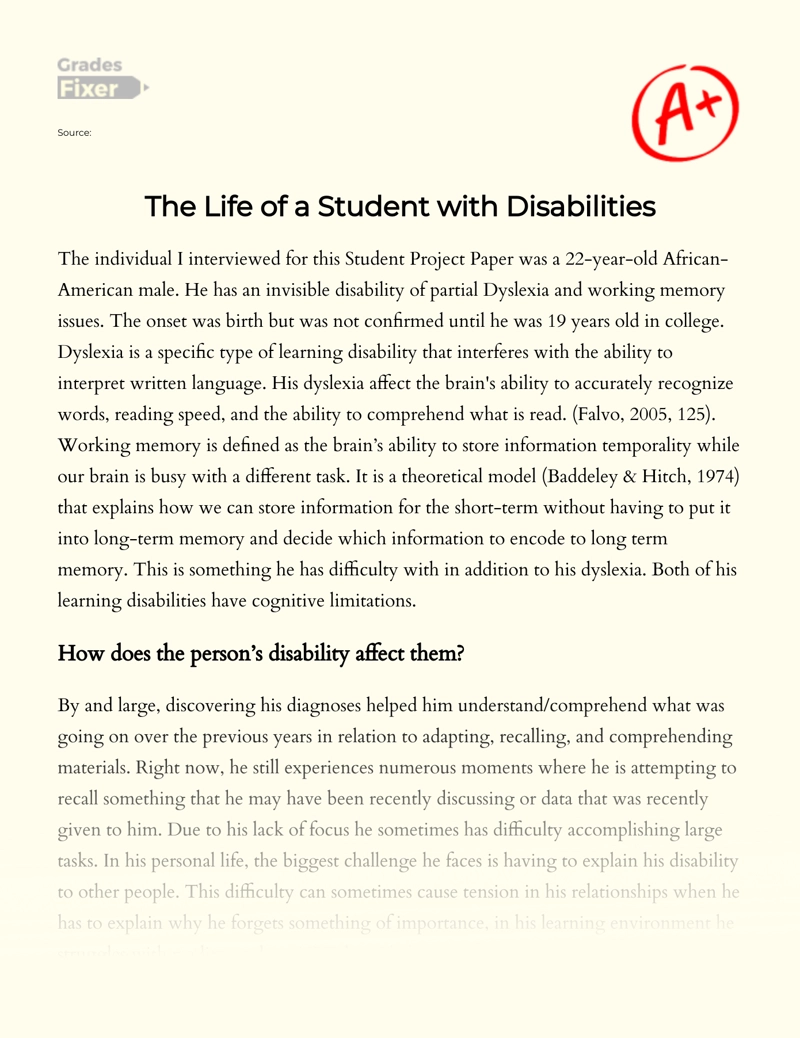
Still can’t find what you need?
Browse our vast selection of original essay samples, each expertly formatted and styled
Related Essays on Mother
Clift-Matthews, Victoria. (2010). The Nature of Bonding and Attachment in Pregnancy. British Journal of Midwifery, 18(5), 310-315.Feldman, R., Weller, A., Leckman, J. F., Kuint, J., & Eidelman, A. I. (1999). The Nature of the [...]
In today's world, the concept of motherhood holds immense significance and is often celebrated for the love, sacrifice, and care that mothers provide to their children. This essay will explore the essence of what it means to be [...]
The story of a hardworking mother is a testament to dedication and resilience. As she navigates the intricate web of responsibilities, she defies limitations and redefines societal expectations. Her ability to thrive as a [...]
The role of a mother in society has been a subject of study and analysis for decades. The ordinary devoted mother often goes unnoticed and unappreciated, yet her impact on her children and society as a whole is immeasurable. In [...]
Four years ago, during a cold winter, my mother's birthday was fast approaching, and she was about to turn fifty. As her special day was getting closer, I was contemplating on what to write for my mother's birthday [...]
This essay has investigated the differences between children brought up by working moms and stay at home moms. It is apparent that mothers play a great role in the emotional, psychological and physical development of their [...]
Related Topics
By clicking “Send”, you agree to our Terms of service and Privacy statement . We will occasionally send you account related emails.
Where do you want us to send this sample?
By clicking “Continue”, you agree to our terms of service and privacy policy.
Be careful. This essay is not unique
This essay was donated by a student and is likely to have been used and submitted before
Download this Sample
Free samples may contain mistakes and not unique parts
Sorry, we could not paraphrase this essay. Our professional writers can rewrite it and get you a unique paper.
Please check your inbox.
We can write you a custom essay that will follow your exact instructions and meet the deadlines. Let's fix your grades together!
Get Your Personalized Essay in 3 Hours or Less!
We use cookies to personalyze your web-site experience. By continuing we’ll assume you board with our cookie policy .
- Instructions Followed To The Letter
- Deadlines Met At Every Stage
- Unique And Plagiarism Free
- Asia - Pacific
- Middle East - Africa
- Apologetics
- Benedict XVI
- Catholic Links
- Church Fathers
- Life & Family
- Liturgical Calendar
- Pope Francis
- CNA Newsletter
- Editors Service About Us Advertise Privacy

Pope Francis decries how ‘the unborn with disabilities are aborted’ in throwaway culture

By Courtney Mares
Rome Newsroom, Apr 11, 2024 / 11:15 am
Pope Francis decried how “the unborn with disabilities are aborted” in a speech on Thursday to a Vatican conference on disability inclusion.
The pope warned that “the throwaway culture” turns into “a culture of death” when people “presume to be able to establish, on the basis of utilitarian and functional criteria, when a life has value and is worth being lived.”
He pointed out that we see this today especially on the two extremes of the spectrum of life — “the unborn with disabilities are aborted and the elderly close to the end are administered an ‘easy death’ by euthanasia.”
According to the University of Notre Dame’s McGrath Institute for Church Life , it’s estimated that there are as many as 27,000 abortions annually due to a poor prenatal diagnosis in the United States.
“Every human being has the right to live with dignity and to develop integrally. Even if they are unproductive, or were born with or develop limitations, this does not detract from their great dignity as human persons, a dignity based not on circumstances but on the intrinsic worth of their being,” Pope Francis said in the Apostolic Palace’s Clementine Hall on April 11.
The pope addressed this message to the Pontifical Academy of Social Sciences, which is made up of academics and professionals in the fields of law, political science, economics, and sociology.
The academy is meeting at the Vatican this week for its plenary session on disability inclusion .
“The plenary intends to take up the challenge and make its own contribution by identifying what … represent the barriers that increase the disability of a society and prevent persons with disability from fully participating in social life,” the plenary session’s program says.
The three-day conference includes discussions on the rights of persons with disabilities, policies for greater economic inclusion, and philosophical perspectives on disability and the human condition.
In his speech to the pontifical academy, Pope Francis underlined that “vulnerability and frailty are part of the human condition and not something proper only to persons with disabilities.”
He said that “combating the throwaway culture calls for promoting the culture of inclusion” by “forging and consolidating the bonds of belonging within society.”
The pope added that “the bonds of belonging become even stronger when persons with disabilities are not simply passive receivers but take an active part in the life of society as agents of change.”
According to the Pontifical Academy for Social Sciences, there is no exact number for the amount of people with disabilities worldwide, but international organizations estimate that 16% of the world’s population experience significant disabling conditions.
The “First World Report on Disability” found that people with some form of physical, sensory, or intellectual impairment experience multiple disadvantages compared with the rest of the population, which include barriers in accessing services, lower levels of education, poverty, and less participation in political and cultural life.
“Sadly, in various parts of the world, many persons and families continue to be isolated and forced to the margins of social life because of disabilities,” Pope Francis said.
“And this not only in poorer countries, where the majority of disabled persons live and where their condition often condemns them to extreme poverty, but also in situations of greater prosperity, where, at times, handicaps are considered a ‘personal tragedy’ and the disabled ‘hidden exiles,’ treated as foreigners in society.”
In the pontifical academy’s concept note for the plenary session, the academy recognized the strong solidarity found in family associations that support and accompany families who care for disabled individuals, noting that this solidarity takes on a social significance.
More in Vatican

Pastoral genius of St. John Paul II: 40 years ago, he laid foundation for World Youth Day
Pope Francis highlighted that “the Church’s care and concern for those with one or more disabilities concretely reflects the many encounters of Jesus with such persons, as described in the Gospels.”
“Jesus not only relates to disabled persons; he also changes the meaning of their experience,” he said. “In fact, he showed a new approach to the condition of persons with disabilities, both in society and before God.”
“In Jesus’ eyes, every human condition, including those marked by grave limitations, is an invitation to a unique relationship with God that enables people to flourish.”
- Catholic News ,
- Pope Francis ,
- Disabilities ,
- Pontifical Academy for Social Sciences ,

Subscribe to our daily newsletter
Our mission is the truth. join us.
Your monthly donation will help our team continue reporting the truth, with fairness, integrity, and fidelity to Jesus Christ and his Church.
You may also like

Vatican document on human dignity condemns gender transition, surrogacy, abortion
In the declaration, the Dicastery for the Doctrine of the Faith cautions against threats to human dignity that begin at the moment of conception.
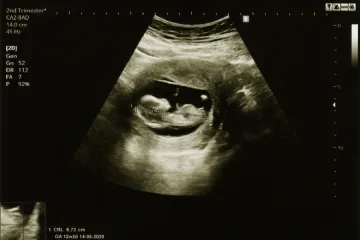
Norway bishops: Proposal to expand abortion abandons ‘Christian and humanistic heritage’
Current Norway law allows elective abortions through the 12th week of pregnancy but only in limited cases afterward.

Vatican on France’s abortion amendment: There cannot be a ‘right’ to take a human life
“The Pontifical Academy for Life reiterates that precisely in the era of universal human rights, there cannot be a ‘right’ to take a human life,” the academy wrote.
- TODAY Plaza
- Share this —

- Watch Full Episodes
- Read With Jenna
- Inspirational
- Relationships
- TODAY Table
- Newsletters
- Start TODAY
- Shop TODAY Awards
- Citi Music Series
- Listen All Day
Follow today
More Brands
- On The Show
I was 1 of millions who traveled for the eclipse. Here's how it went

I first heard about the Great American Eclipse from my now husband , Dave, three years ago. He told me he was absolutely, without a doubt going to see the eclipse in 2024, because the last one had changed his life.
He described what really happened once the moon fully blocked the sun’s light back in 2017: The sky grew dark. The air cold. To him, it felt like being on another planet entirely. While he stood there in a field in rural Tennessee, the strangers around him began to cheer. “It’s like, you’re not even human anymore,” he said about witnessing totality firsthand.
Eclipse comes from the Greek word for “abandonment,” because for a few minutes, it’s as if the sun leaves us, and something strange and magical takes its place.
Dave's experience lasted for about two minutes before life returned to normal — but onlookers everywhere felt like they had been changed for good. They were aware of having passed through a once-in-a-lifetime experience. Actually, a once-in-a-universe one.
One that I, stupidly, missed out on because I was too cheap to pay for an overpriced flight to Greenville, South Carolina, and too nervous to take yet another day off from my first job. Seeing that 2017 partial eclipse from downtown Manhattan, I realized that my human concerns got in the way of a celestial breakthrough. After that very human error, I vowed I would see an eclipse eventually. Next time, I would get my chance in 2024.
The eclipse on April 8 was notable for a few reasons. For one, it cut across many major metropolitan areas, from Mazatlan, Texas through Dallas, all the way up to Maine and Montreal. Timing matters, too: This eclipse hit North America on a day with clear weather and it’s the last one the contiguous U.S. will see until 2043.
This eclipse stands to be an even more powerful experience than the last. “This one will be even longer, with more than four minutes of darkness along much of the path of totality,” said Catherine Pilachowski, the Kirkwood Chair in Astronomy at Indiana University Bloomington.
“A total eclipse is a deeply moving experience — it's a sense of connection to nature, to the universe, in a way we don’t often experience,” she said, echoing Dave’s words.
But what is an eclipse, and why is this one special enough to send millions in search of a few minutes in the dark?
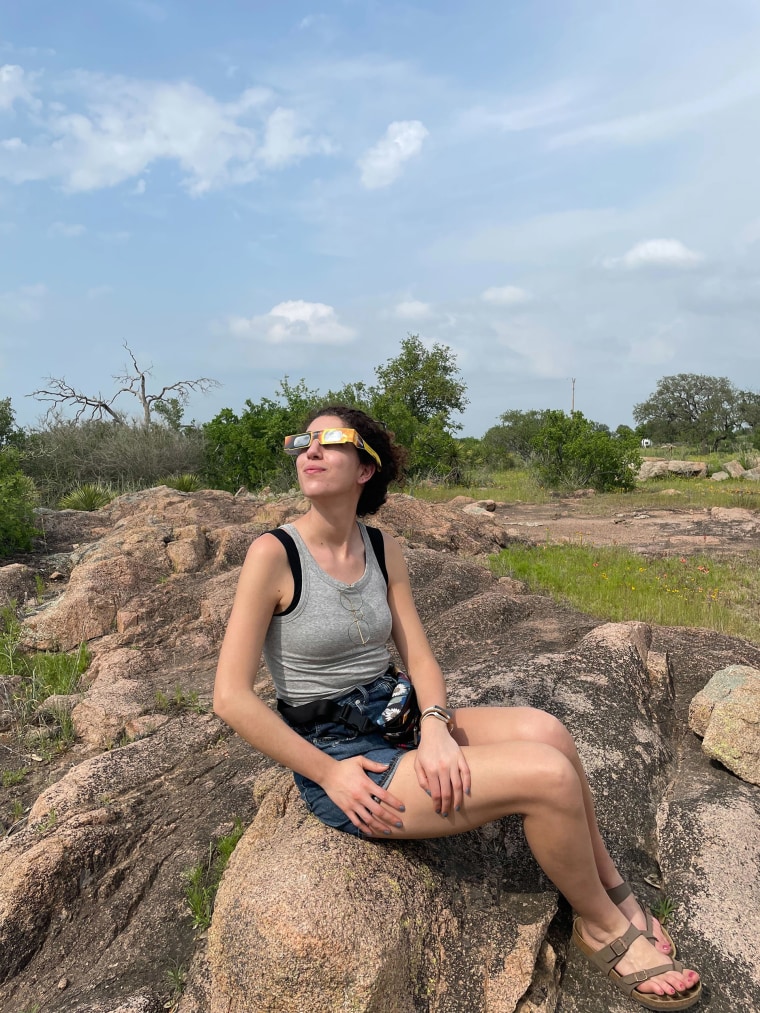
“Eclipses occur when the moon and sun appear to be the same size and line up in the sky,” Dr. Anita Cochran of UT Austin said. The alignment of the sun, earth and moon is a “complex dance,” she said, given their elliptical patterns. Actual eclipses aren’t uncommon and occur multiple times a year, though solar eclipses happen less frequently. The trouble is that most eclipses occur over the ocean and their paths of totality are very small.“You get really lucky when you get into the path,” Cochran said of the small but populous swath of America that will have front-row seats to the show.
Astrologer Lisa Stardust has a different take. She warns that astrologers recommend staying far away from the path of totality, since “eclipses can bring intense emotions and secrets to the surface, causing people to act out or behave unpredictably.”
I decided that was a risk I would take, which was good, because Dave and I planned to travel to the epicenter of it all: Texas. Historically, Texas is the state along the eclipse path with the lowest cloud cover this time of year. Because of the weather conditions, an estimated 1.1 million people would travel the state to view the eclipse.
John Beckman, who traveled to Montana to witness the eclipse in 2017, drove across the country from California to Texas this year to meet a group of 20 family members and friends.
“It’s really hard to get through to people that you’re going cross country for three minutes (of eclipse),” he said.
A whole year prior to the eclipse, we solidified our plan to hit the road. We would meet up with Dave's cousins, who live in Austin, and drive to a camp site in Llano, Texas, right at the center of the eclipse path. There, over 120 people from around the wold — from Melbourne to Colorado — would convene to witness the cosmic event together.
In the months leading up to April 8, we met the fellow travelers on Zoom calls. We learned who would be bringing telescopes and tents, and signed up for potlucks and Peruvian fire rituals (yes, really).
Meanwhile, the people of Llano, Texas — a town of 2,000 — prepared for an influx of eclipse chasers just like us. Michelle Long Hagli, the owner of Brown Chicken Brown Cow Ranch, warned us to have supplies. At times, I couldn’t tell if we were preparing for a natural phenomenon or disaster.
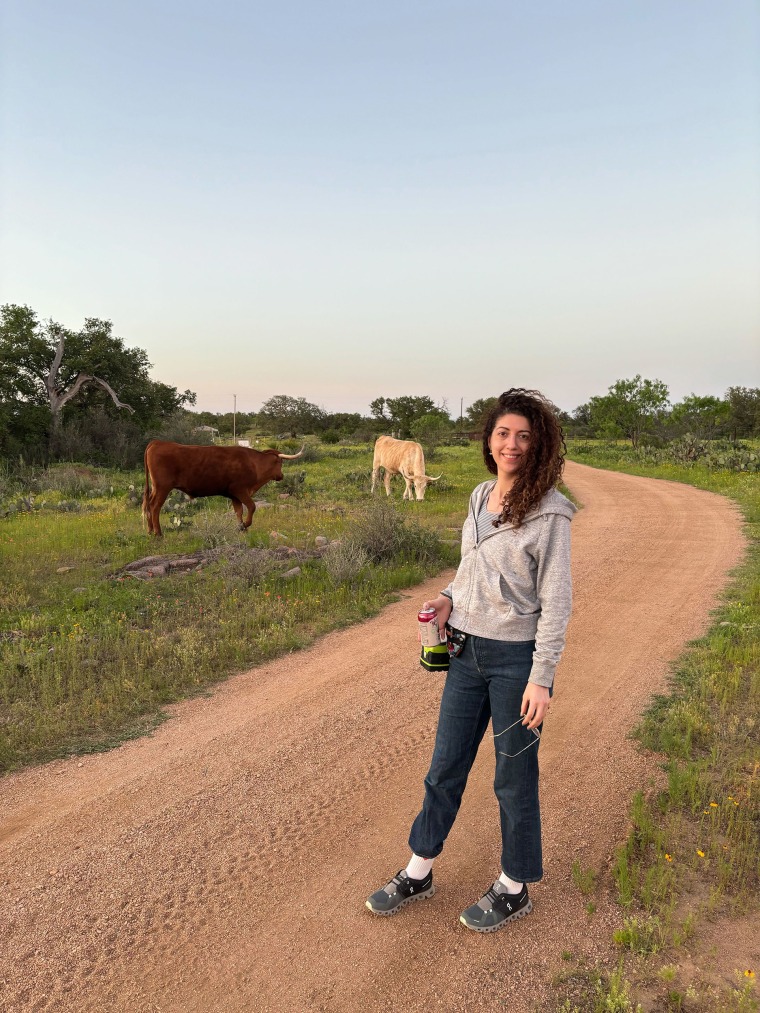
Public notes from the mayor of Llano seemed to take on the same tone of resignation and anticipation as Michelle. She advised townspeople to have “ two weeks of supplies” secured by April 1, and put it this way in a poetic Facebook post to her constituents: “We could not stop this wave of eclipse watchers from coming here to Llano even if we wanted to, so we will make the best of it. And even though it will be a boost for the economy, it will be like trying to get a drink out of a fire hose.”Diana Stewart, a Llanite who owns a local tamale business, said, days before the eclipse, “We’re not sure what to expect. We don’t know if we should prepare for the masses, or if it will be similar to a Christmas holiday.” She adds generally, she and her neighbors are “excited,” saying, “We think this will be a great time to show everyone how beautiful and unique our little town is.”
As we prepared (and as I watched airfare rates nearly triple) I started to relax and dream of totality in a small Texas town.
Last eclipse, I was so worried with my human concerns I missed out on something great. This eclipse, I was so sure of my human plans that I forgot about the other key player: The sky. It turns out that weather doesn't care for even the best-laid plans.
The weekend before the eclipse, I began to panic at the sight of the weather forecast. Clouds . I studied the forecast so much, I felt like I had accrued enough credits for a meteorology minor. I learned the difference between cloud types: High, cirrus clouds were good; it meant the sun could poke through. Cumulus clouds, which cover the sky like a blanket, foretold total eclipse doom. Still, as I looked at chart after chart, it felt a bit like reading tea leaves. How were we to know until Monday at 1:35 CT?
Dave, forever calm, kept telling me to close the computer and my multiple browser tabs for “Texas weather eclipse.”
All the local Texans I spoke to, including our family, said not to bother: Texas weather changes on a dime. Still, I wanted certainty that this trip would be worth the trek.
Looking at cloud cover blanketing Texas, I entertained canceling the whole trip and going to Alexandria Bay, New York, where the forecast appeared to be clearer. There, I could watch the eclipse on the St. Lawrence River.
But Dave and had a plan, and we would stick to it, whether or not we had a pact with the sky.
Our flight to Austin from Newark on April 6 was nearly full. Just before takeoff, the flight attendant got on the loudspeaker and asked, “How many of you are going to see the eclipse?” Passengers cheered as if it were a sporting event, myself included.
While boarding the plane, I realized this trip, and the weather, hadn’t just consumed me — it had consumed nearly everyone else as well.
A family of five boarded ahead of us. The dad, wide-eyed, said his friends told him about the 2017 eclipse, and he couldn’t miss out on this one, so he was bringing the whole family along. His son chimed in saying it was going to be cloudy, but they all seemed determined to have a good time despite the weather.
One of the sons chimed in with “Spain 2026.” It was an invocation I heard often on my eclipse Facebook groups, calling to the next visible total solar eclipse. As if to say: we might not have Texas, but we’ll always have Spain.
I asked a woman ahead of me if she was traveling to see the eclipse. “More like not going to see it,” she said. She went on to compare the eclipse to her wedding night: “Dark and cloudy.”
The flight attendant warned me as I left. She said her friend was from Llano, where we were headed — and that it was going to be mobbed. I decided not to text my mom that.
Once we landed in Austin, Dave’s cousin, Brian, and his partner Erika picked us up from the airport. On Sunday morning, we left for the campsite. Michelle Long Hagli, who bought the land with her husband after the pandemic, greeted us with a huge hello, wearing the eclipse shirts she had designed for the occasion. On it was a brown chicken and a cow donning eclipse glasses.
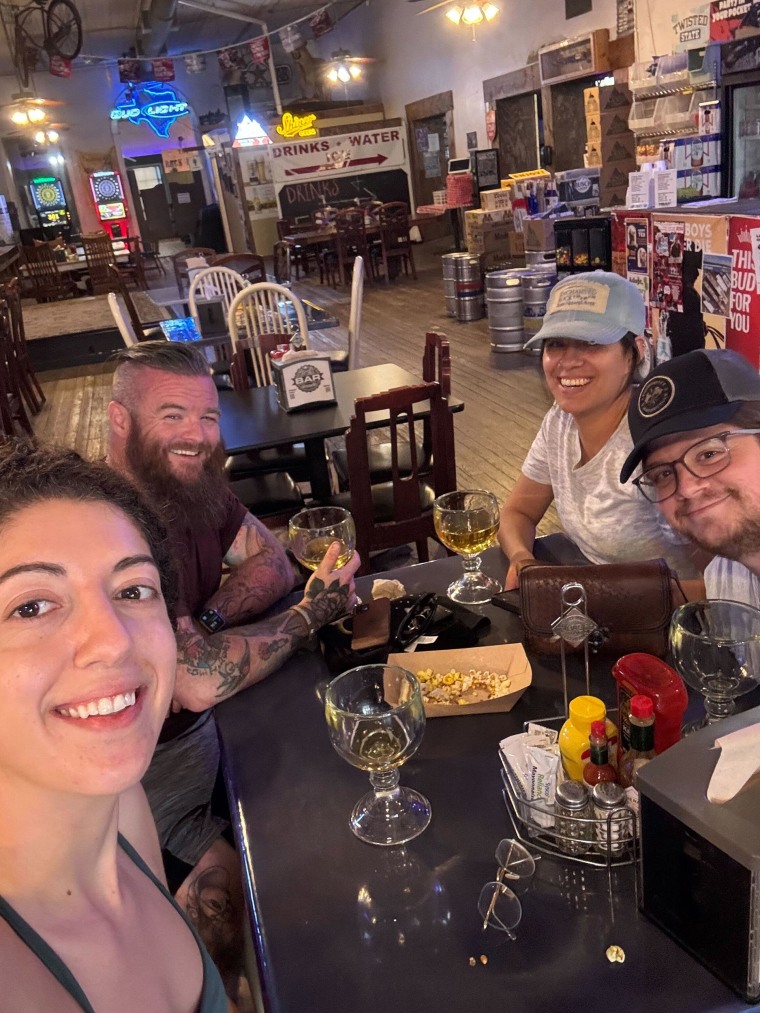
My first impression of Brown Chicken Brown Cow Ranch is that it smells much better than I thought a ranch ever could. The bluebonnets has blossomed, and so did a sense of excitement among everyone we passed. What followed was a slideshow of Texas’ greatest hits: We ate barbecue from Cooper’s, went to a big, empty bar in downtown Llano, met four longhorn cows and hiked Enchanted Rock. Yes, it was enchanted (and also steep). By night, we could see the stars. The evening before the eclipse, we woke up in the dark to a clear night sky.
The next day, those skies had changed to gray. Still, Michelle was cheery when I asked if she ever worried about the weather. She said at 56, she had lived long enough to stop worrying about things out of her control. Anyway, she said, “it was all a gift from God.”
By then, I was so happy in the Texas landscape that I started to believe she was right.
We had pancakes, then we participated in a ritual meant to situate ourselves as one with the planet, harness the manifesting powers of the eclipse and release baggage, guided by healers Woody Strickland and Kay Jantzen. Obviously, I prayed for a clear sky. As we were directed us to pray toward the sun, the sun suddenly broke through the clouds.
Then came the crucial decision that would determine our entire eclipse experience: The question of whether to stay put or go elsewhere. To play the cards we had, or drive until we found a better deck.
Dave, who reads weather maps for fun, made the call. We would go west for an hour where it seemed less cloudy — 25% coverage to Llano’s 75% — and totality still stretched for over three minutes.
Still, I was worried. What if we left, and the conditions were clearer back at BCBC Ranch? What if we encountered traffic and missed it all? I thanked myself for marrying someone so decisive. Dave dismissed my worries and we hit the road.
We took a nearly empty stretch of Road 171 westward toward Brady, before stopping in the small community of Voca. The only structure we could see was a vineyard (closed) and a post office (also closed). The post office parking lot was filled with about 10 cars and plenty telescopes — it was clear that others were waiting in anticipation.
We parked and set up our chairs in a field of bluebonnets. Together, all us strangers waited patiently. Many had waiting for years, but the last few minutes leading up to the eclipse felt the longest.
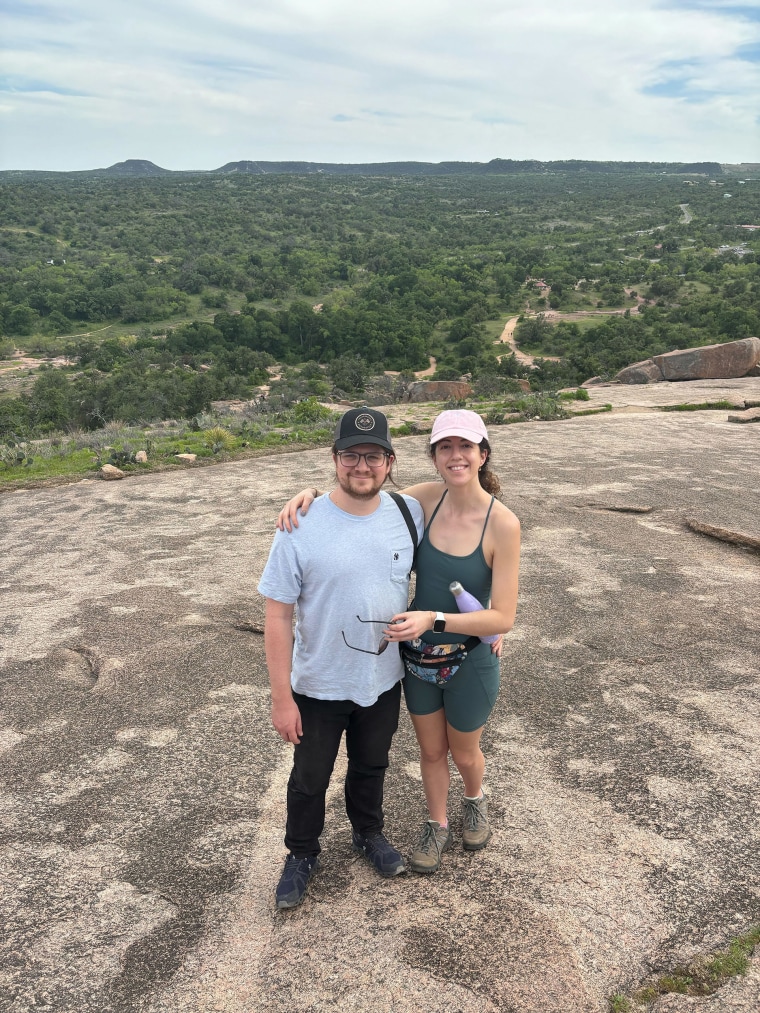
The other onlookers were seemingly in this tiny town on accident. Vice, Texas (population: 50), was not the plan, but the travelers I met and spoke to had made the same calculations that Dave and I had. All except Shirlene Miller, the woman whose field we congregated next to. She moved to Voca for her husband, who was born and raised there. At 84, she told me this was her last chance at an eclipse. I hoped the clouds would clear for her. And, ok , for me, too.The moon started its journey into the sun’s path at 12:15 and would reach totality at 1:35. I felt like I was at a championship game and the teams were tied, only there was no coaching, no reason, nothing that could be done. Low clouds started to gather. For about 15 minutes, the sun was gone.
Then, like some sort of cosmic red carpet, a pathway opened between the clouds. It looked like a path made for the sun to travel — and travel it did. We all looked up, glasses on. Everything but the sun was dark. We watched as the sun went from a crescent to a sliver. Then, it was gone.
I took off my glasses and saw it: totality. The moon blocking the sun. This is what no one else could see outside the path of totality.
Here is where I get to the part that's almost impossible to express. Now that I've experienced a total solar eclipse, I know that no video, photo or description will do it justice.
The best thing I can say is to travel in 2026 to see the next total eclipse yourself. All words and video will fail you in the meantime.
Because you’re curious, I’ll try my best to describe the experience. It is like a third sun or moon you never knew before coming out to introduce itself, and you wondered how you missed it this whole time. It’s like the eye of God coming out to blink. It’s like the clock turning to 1/1/2000 and standing in a crowd, trying to make sense of time and the universe and our place in it. It’s feeling that not only are the sun, moon and earth aligned but somehow, you are too.
It was enough to make me literally fall to my knees.
This is actually what happened. The moon covered the sun and the world grew dark. Venus and Mercury were visible in the dusk-like sky. People cheered and shouted (fine, people being me). Simply put, it was so incredibly cool.
Perhaps Brian put it best when he said, “I get why people 1000 years ago were terrified. It gets dark out, and you look up and there’s a black circle?”
Then it was over, the vista was gone. I put my eclipse glasses back on, and realized I couldn’t get back that magical moment if I tried. If I tried, I'd quite literally go blind.
The sky lightened. The birds began chirping again — I didn’t realize how silent it had become. We all looked back at each other in awe.
We did it. With plenty of planning and a lot of luck, we actually accomplished what we had come to Texas to see.
I’m still processing the eclipse and processing the lessons it has for me. Is there a way to make sense of luck? Does it just happen? Or does luck happen by putting yourself in its path, and making sure you’re looking up, ready to marvel at whatever comes your way?
I do know this; I got lucky, and it’s only because I didn’t get in the way of myself. I surrendered to the day — and to Dave — who never worried.
The truth is my worries never mattered. They never had any sway over the clouds. No matter what happened, I was lucky to come along for the ride — lucky for another day under this sun.
My sense of awe and luck was shared with Jay Lawson, an amateur astronomer at the Brown Chicken Brown Cow Ranch, who wore a shirt emblazoned with four eclipses he has seen from 1979 to 2024. It turns out that totality was visible for only 90 seconds at BCBC ranch, but it was still something.
“You plan for years, and it’s done in a few seconds. And all you can think is, ‘When can I see another?’” Lawson said, taking the words right out of my mouth.
It goes without saying: Spain 2026! Dave and I hope to see you there.
Elena Nicolaou is a senior entertainment editor at Today.com, where she covers the latest in TV, pop culture, movies and all things streaming. Previously, she covered culture at Refinery29 and Oprah Daily. Her superpower is matching people up with the perfect book, which she does on her podcast, Blind Date With a Book.

My fiancé is 17 years older than me and I’m sick of the age-gap conversation
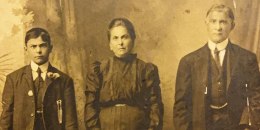
Author Jo Piazza: How a 100-year-old family murder mystery inspired my new novel
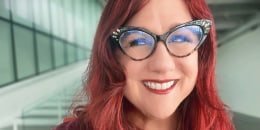
I’m going boysober for a month. Here’s what that means and why I’m doing it
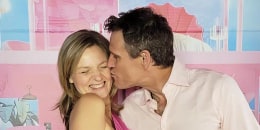
I fell in love. Then I found out he was a celebrity
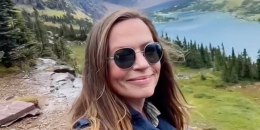
I went viral for being childless and happy at 37, and it was terrifying
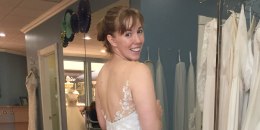
I took my fiancé wedding dress shopping — and he hated everything
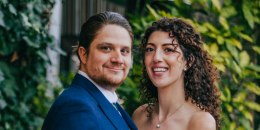
I asked my fiancé to surprise me with our honeymoon destination. Here's how it went
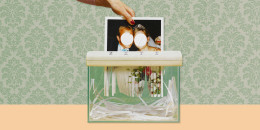
Divorce is having a moment. And I wish it had happened 10 years ago
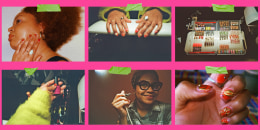
A Black woman’s ode to nail art
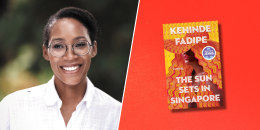
What living in Singapore taught me about making friends as an adult
Relationships.
Advertisement
What Solar Eclipse-Gazing Has Looked Like for the Past 2 Centuries
Millions of people on Monday will continue the tradition of experiencing and capturing solar eclipses, a pursuit that has spawned a lot of unusual gear.
- Share full article

By Sarah Eckinger
- April 8, 2024
For centuries, people have been clamoring to glimpse solar eclipses. From astronomers with custom-built photographic equipment to groups huddled together with special glasses, this spectacle has captivated the human imagination.
Creating a Permanent Record
In 1860, Warren de la Rue captured what many sources describe as the first photograph of a total solar eclipse . He took it in Rivabellosa, Spain, with an instrument known as the Kew Photoheliograph . This combination of a telescope and camera was specifically built to photograph the sun.
Forty years later, Nevil Maskelyne, a magician and an astronomy enthusiast, filmed a total solar eclipse in North Carolina. The footage was lost, however, and only released in 2019 after it was rediscovered in the Royal Astronomical Society’s archives.

Telescopic Vision
For scientists and astronomers, eclipses provide an opportunity not only to view the moon’s umbra and gaze at the sun’s corona, but also to make observations that further their studies. Many observatories, or friendly neighbors with a telescope, also make their instruments available to the public during eclipses.
Fredrik Hjalmar Johansen, Fridtjof Nansen and Sigurd Scott Hansen observing a solar eclipse while on a polar expedition in 1894 .
Women from Wellesley College in Massachusetts and their professor tested out equipment ahead of their eclipse trip (to “catch old Sol in the act,” as the original New York Times article phrased it) to New London, Conn., in 1922.
A group from Swarthmore College in Pennsylvania traveled to Yerbaniz, Mexico, in 1923, with telescopes and a 65-foot camera to observe the sun’s corona .
Dr. J.J. Nassau, director of the Warner and Swasey Observatory at Case School of Applied Science in Cleveland, prepared to head to Douglas Hill, Maine, to study an eclipse in 1932. An entire freight car was required to transport the institution’s equipment.
Visitors viewed a solar eclipse at an observatory in Berlin in the mid-1930s.
A family set up two telescopes in Bar Harbor, Maine, in 1963. The two children placed stones on the base to help steady them.
An astronomer examined equipment for an eclipse in a desert in Mauritania in June 1973. We credit the hot climate for his choice in outfit.
Indirect Light
If you see people on Monday sprinting to your local park clutching pieces of paper, or with a cardboard box of their head, they are probably planning to reflect or project images of the solar eclipse onto a surface.
Cynthia Goulakos demonstrated a safe way to view a solar eclipse , with two pieces of cardboard to create a reflection of the shadowed sun, in Lowell, Mass., in 1970.
Another popular option is to create a pinhole camera. This woman did so in Central Park in 1963 by using a paper cup with a small hole in the bottom and a twin-lens reflex camera.
Amateur astronomers viewed a partial eclipse, projected from a telescope onto a screen, from atop the Empire State Building in 1967 .
Back in Central Park, in 1970, Irving Schwartz and his wife reflected an eclipse onto a piece of paper by holding binoculars on the edge of a garbage basket.
Children in Denver in 1979 used cardboard viewing boxes and pieces of paper with small pinholes to view projections of a partial eclipse.
A crowd gathered around a basin of water dyed with dark ink, waiting for the reflection of a solar eclipse to appear, in Hanoi, Vietnam, in 1995.
Staring at the Sun (or, How Not to Burn Your Retinas)
Eclipse-gazers have used different methods to protect their eyes throughout the years, some safer than others .
In 1927, women gathered at a window in a building in London to watch a total eclipse through smoked glass. This was popularized in France in the 1700s , but fell out of favor when physicians began writing papers on children whose vision was damaged.
Another trend was to use a strip of exposed photographic film, as seen below in Sydney, Australia, in 1948 and in Turkana, Kenya, in 1963. This method, which was even suggested by The Times in 1979 , has since been declared unsafe.
Solar eclipse glasses are a popular and safe way to view the event ( if you use models compliant with international safety standards ). Over the years there have been various styles, including these large hand-held options found in West Palm Beach, Fla., in 1979.
Parents and children watched a partial eclipse through their eclipse glasses in Tokyo in 1981.
Slimmer, more colorful options were used in Nabusimake, Colombia, in 1998.
In France in 1999.
And in Iran and England in 1999.
And the best way to see the eclipse? With family and friends at a watch party, like this one in Isalo National Park in Madagascar in 2001.

IMAGES
VIDEO
COMMENTS
Disability is a mental or physical condition that restricts a person's activities, senses or movements. Modern societies have recognized the problems faced by these individuals and passed laws that ease their interactions. Some people, therefore, believe that life for the disabled has become quite bearable.
I make adjustments to my schedule throughout the day depending on the intensity of the symptoms, which I experience daily on varying levels. These symptoms include head pain, aphasia, allodynia, fatigue, phonophobia, photophobia, impaired cognitive dysfunction, nausea, akathisia and visual aura. Low Pain/ Functioning Days.
768 Words. 4 Pages. Open Document. Living life titled as a disabled person is hard enough, and discriminating against the handicapped isn't making their lives any better. Longmore, a specialist on early America speaks of the history of people with disabilities. They 've been discriminated by society in many ways for many years.
The introduction of equality legislation over the past 20 years (giving disabled people the right to access work, transport and public venues), coupled with high-profile events such as London's ...
Jerry's life is not defined by his disability. He lives life just like anyone else without a disability would live their life. "There's lots I can do, and there are some things that I can't do," said Jerry. "I drive, I invest money. I'm not rich, but I'm not poor.
Disability Essay: The definition of "disability" is not set in stone. It can vary quite a bit depending on how it is being broken down. ... They may also find it difficult to do many simple, day-to-day tasks. Nevertheless, one of the best things is to find joy by strengthening relationships in all aspects of your life - reaching out to ...
In 2 Essay Collections, Writers With Disabilities Tell Their Own Stories. More than 1 in 5 people living in the U.S. has a disability, making it the largest minority group in the country. Despite ...
The answer: Disability is the nondisableds' worst nightmare, and they assume it must be ours, too. Nondisabled people's fear of disability most often takes the form of pity, which manifests in one of two ways: avoidance or feigned adoration. Mairs addresses both of these reactions over and over again throughout the collection.
Activist Alice Wong presents a galvanizing collection of thirty-seven essays by disabled people just in time for the thirtieth anniversary of the Americans with Disabilities Act. Disability Visibility: First-Person Stories from the Twenty-First Century celebrates and documents disability culture in the now.
Essay On Disabled People. 1333 Words6 Pages. Disabled people are people who have mental or physical limitation so they depend on someone to support them in doing their daily life needs and jobs. Although disabled people are a minority and they are normally ignored, they are still a part of the society. The statistics show that the proportion of ...
Disability Visibility: First-Person Stories from the Twenty-First Century $14 at Amazon For most of my life, hope, like joy, seemed to elude me—it felt impossible in a body like mine.
The Dignity of Disabled Lives. The burden of being perceived as different persists. The solution to this problem is community. Mr. Solomon is a professor of clinical psychology at Columbia ...
The personhood of any disabled person cannot be boiled down to one label. A disabled life is more than just one bad thing after another, so let me revel in the good once in a while. Now, excuse me as I finish my Common App essay with this last line of lamenting my disabled experience. Hey, I still need that scholarship money.
A narrative essay about a disabled person can showcase how disabilities can be a curse that impacts a person's entire life, creating immense difficulties in achieving personal and professional goals. Despite living in an era of progress, where everyone strives for betterment, disabled individuals face harsh realities and challenges due to their ...
Recognize that disability is not a monolith. No disabled person is the expert on every disability—or disabled person's experience. Encourage writers to stay in their lanes. If the disabled writer you had in mind isn't the right person for the job, find another one. There are a lot of us, and most of us need work. Check your assumptions.
Harwood implemented a three-year Storysharing project - modelled closely on how people collaboratively share personal anecdotes in daily life - with adults with learning disabilities across eight residential homes and a day centre in Somerset. Findings indicated a positive impact in terms of increases in communication, participation ...
Sophia Bannert - Essay A day in the life of a wheelchair user: navigating Lincoln . Architectural discourse has gradually become incoherent with the social and ethical needs of the contemporary city. With the relationship between theory and practice strained, lack of social relevance in design is ubiquitous.
Overview. Disability Visibility: First-Person Stories from the Twenty-First Century (2020) is an anthology of 37 nonfiction essays collected by disability rights activist Alice Wong. Each essay concerns a different aspect of what it means to be disabled, and the volume includes writings from people with physical, intellectual, psychiatric, and ...
The individual I interviewed for this Student Project Paper was a 22-year-old African- American male. He has an invisible disability of partial Dyslexia and working memory issues. The onset was birth but was not confirmed until he was 19 years old in college. Dyslexia is a specific type of learning disability that interferes with the ability to ...
Pages: 1 (466 words) Views: 494. Download. Each day brings a new opportunity for experiences, growth, and memories. In this essay, I will take you through a typical day in my life, highlighting the routines, activities, and moments that shape my daily existence. Do not use plagiarized sources. Get your custom paper at "A Day in My Life" Get ...
Rome Newsroom, Apr 11, 2024 / 11:15 am. Pope Francis decried how "the unborn with disabilities are aborted" in a speech on Thursday to a Vatican conference on disability inclusion.
John Beckman, who traveled to Montana to witness the eclipse in 2017, drove across the country from California to Texas this year to meet a group of 20 family members and friends. "It's really ...
Millions of people on Monday will continue the tradition of experiencing and capturing solar eclipses, a pursuit that has spawned a lot of unusual gear.